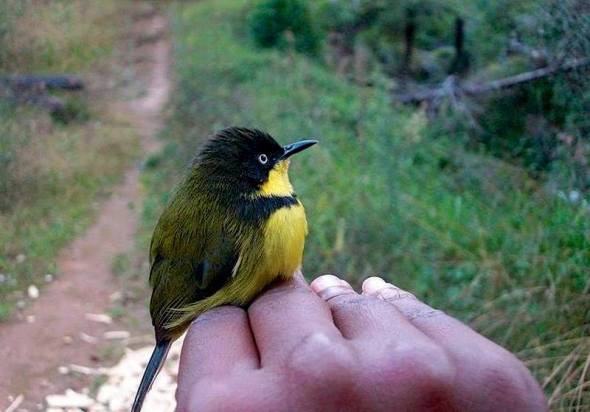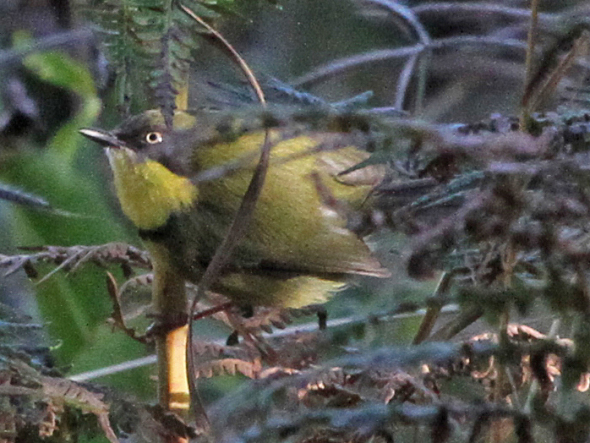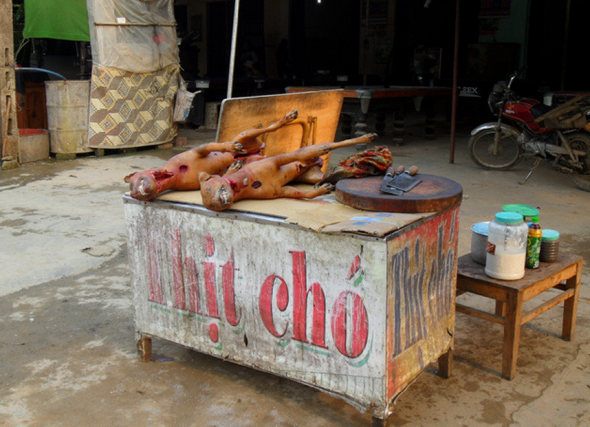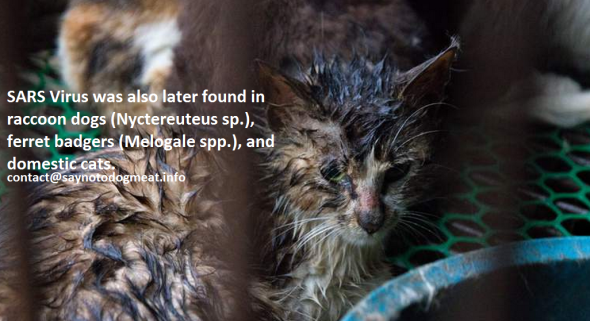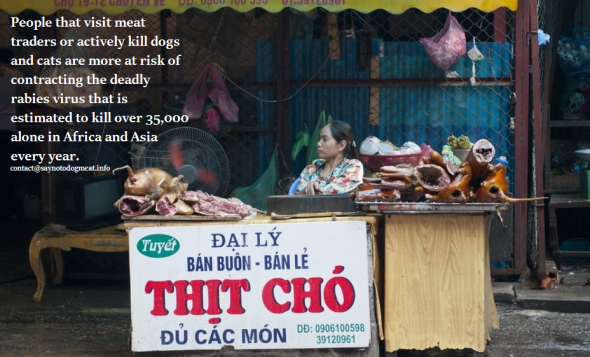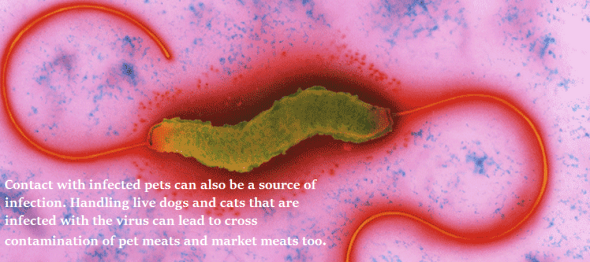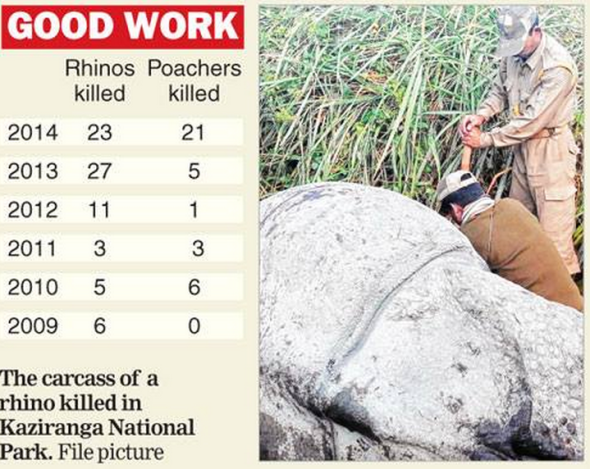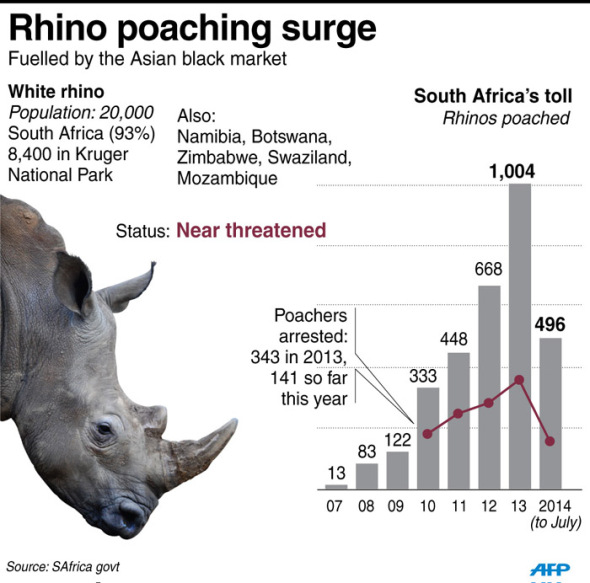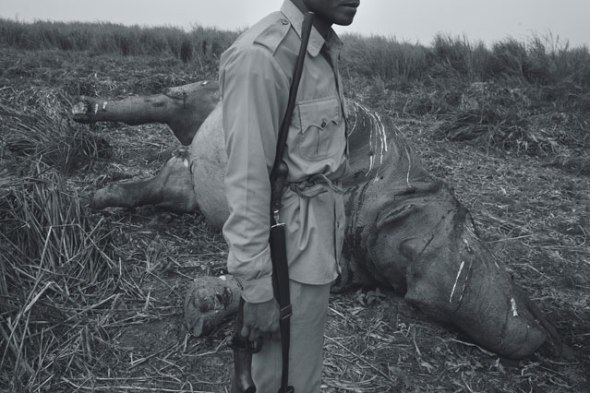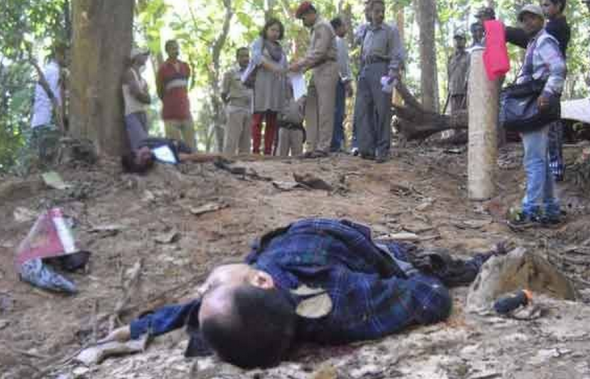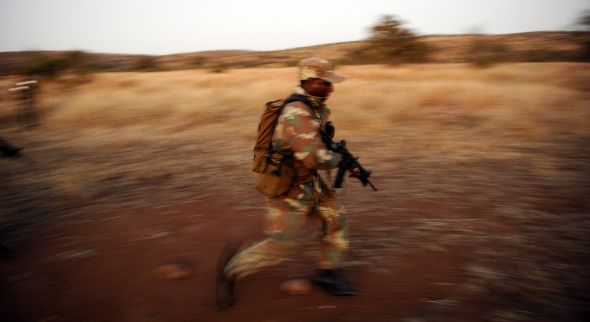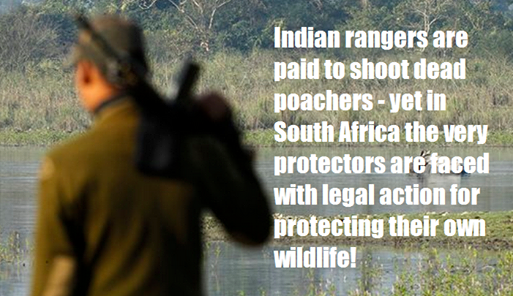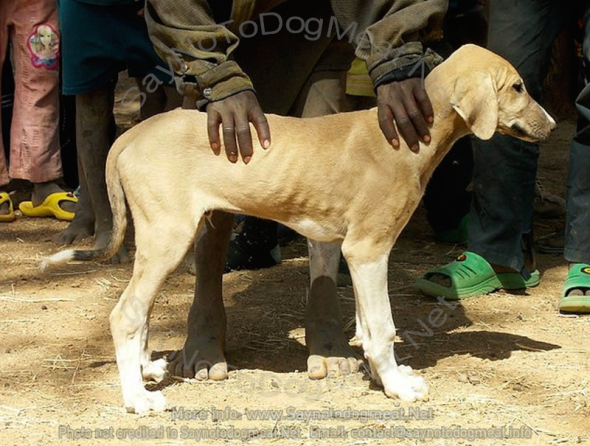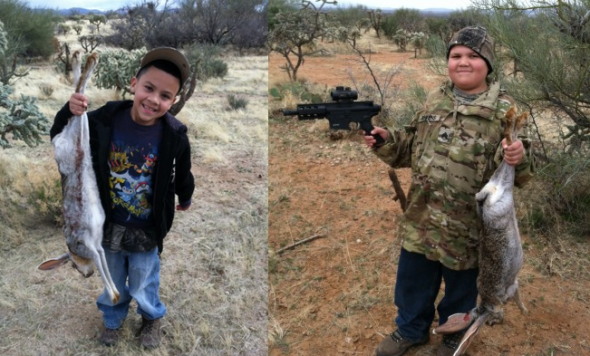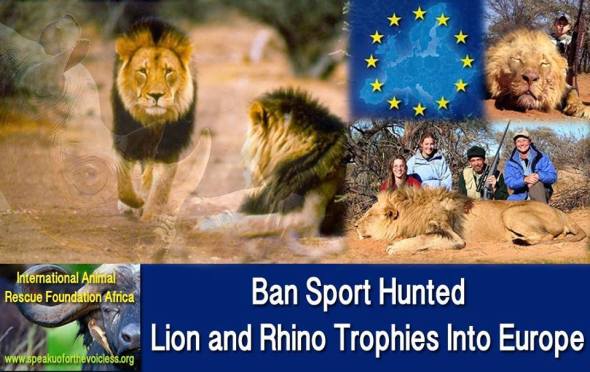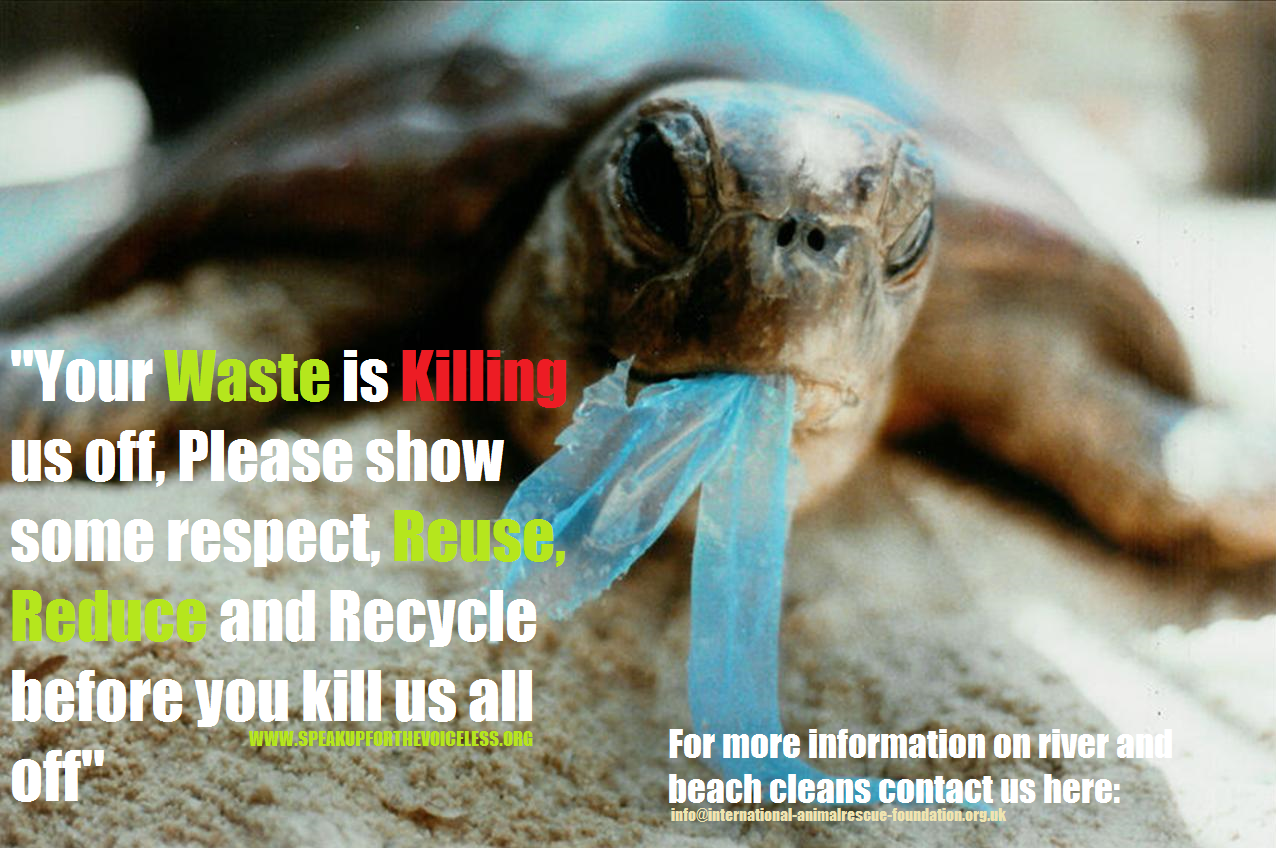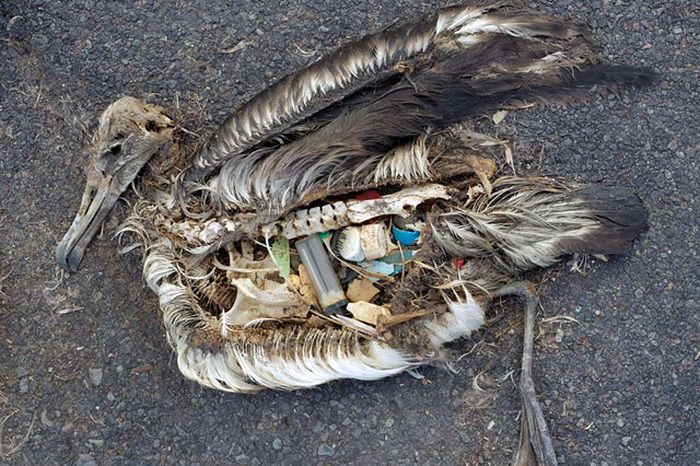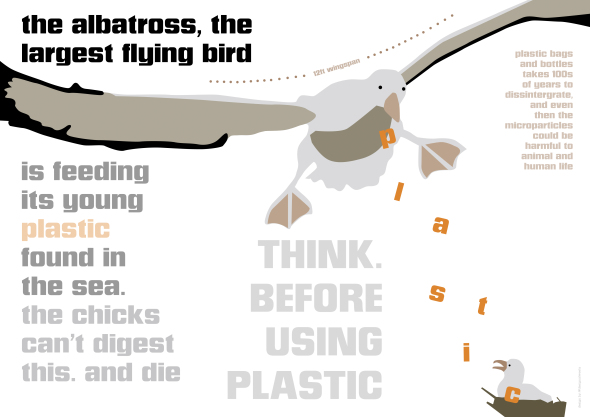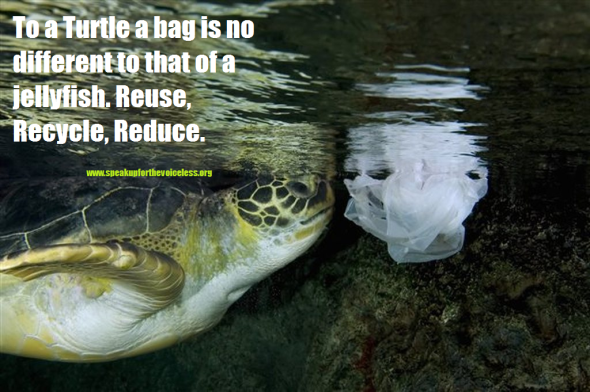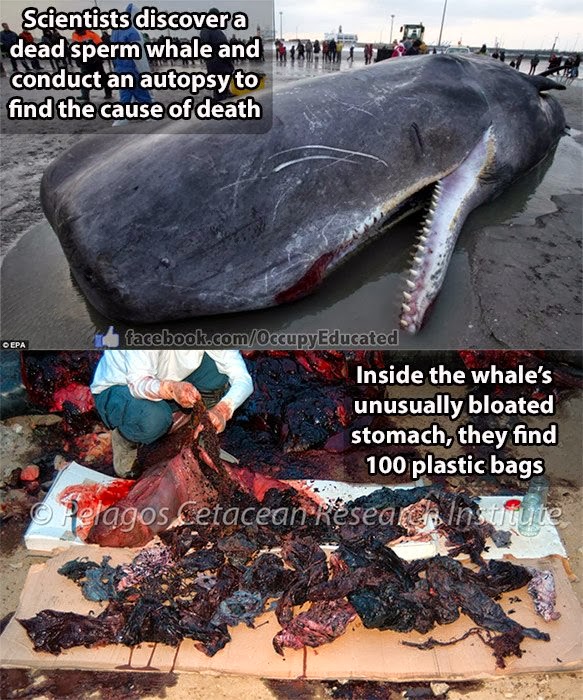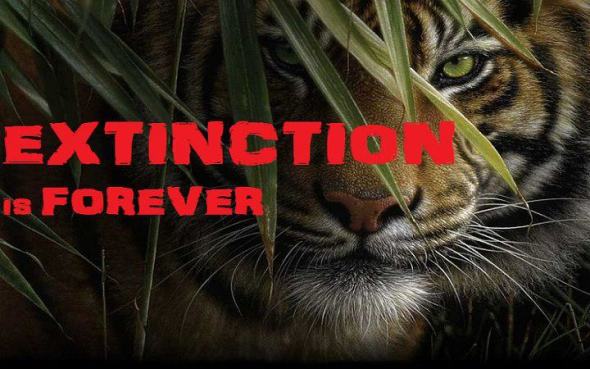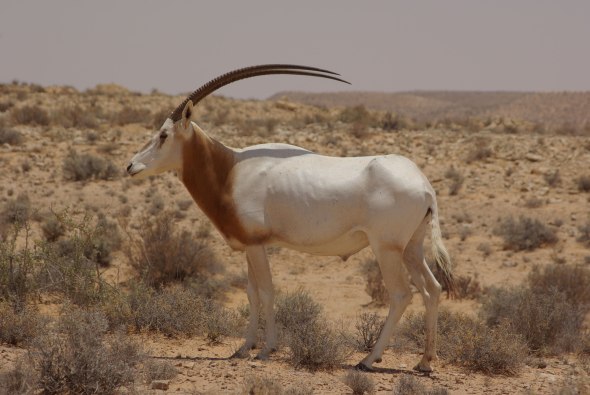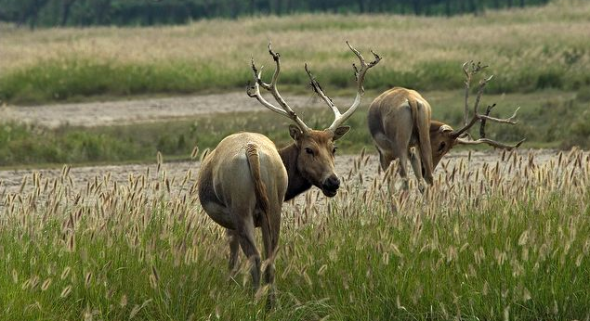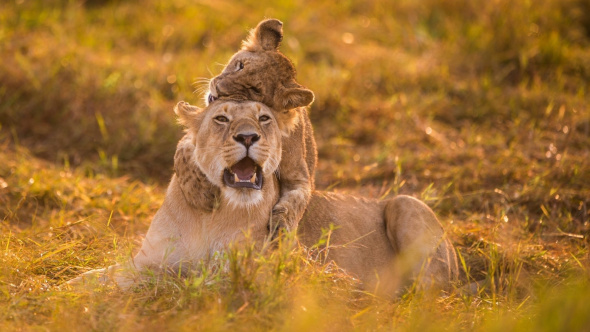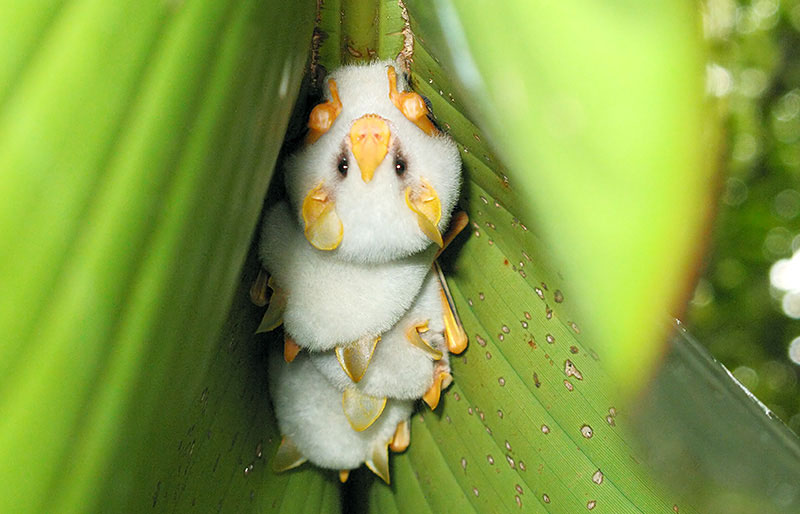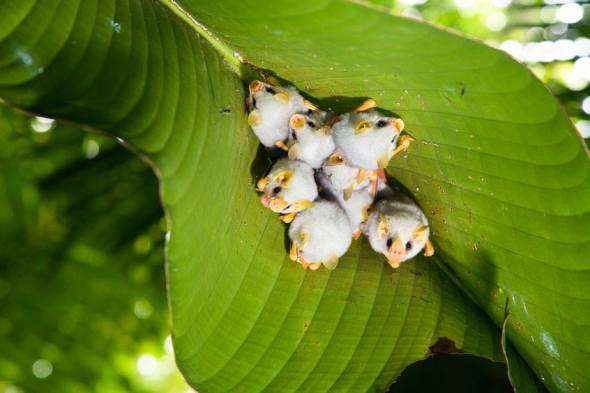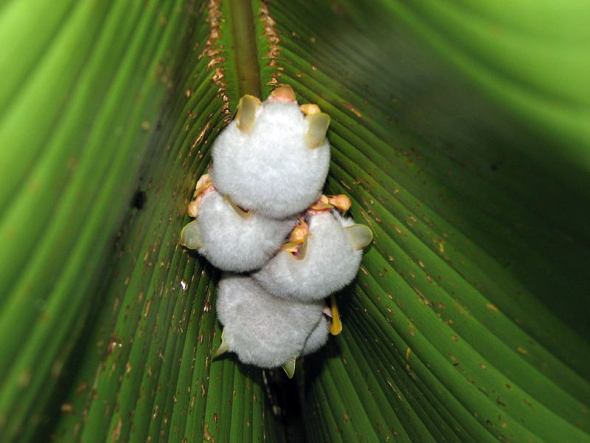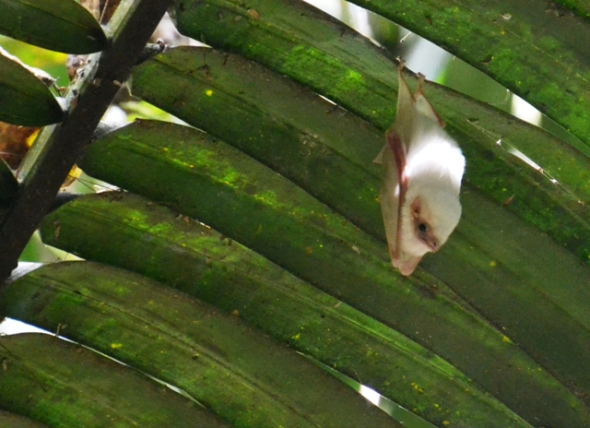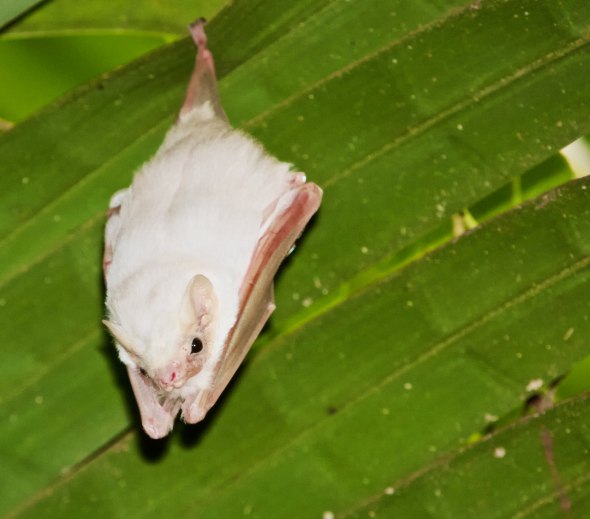Endangered Species Monday: Apalis flavigularis
Endangered Species Monday: Apalis flavigularis
This Monday’s endangered species article I focus again (with a very frustrated mind) on yet another threatened species of bird which is, one of my favorites. Scientifically named as the Apalis flavigularis the species is listed as endangered. Commonly identified as the Yellow-throated Apalis the bird was primarily discovered back in 1893 by Captain George Ernest Shelley (15 May 1840 – 29 November 1910). Captain George Ernest Shelley was an English geologist and ornithologist. He was a nephew of the poet Percy Bysshe Shelley.
Captain Shelley was educated at the Lycée de Versailles and served a few years in the Grenadier Guards.
His books included A Monograph of the Cinnyridae, or Family of Sun Birds, A Handbook to the Birds of Egypt (1872) and The Birds of Africa (5 volumes, 1896 - 1912).
Endemic to Malawi a landlocked country in southeastern Africa, is defined by its topography of highlands split by the Great Rift Valley and enormous Lake Malawi. Bordering Mozambique, Zimbabwe and, Zambia. Populations are decreasing quite rampantly throughout the birds range.
A. flavigularis is restricted within its range to the following mountainous regions Mt Mulanje, Mt Zomba, Mt Malosa in south east Malawi. From 1983 the species was once considered common within its habitat however has since declined to depressing levels. Some reports have stated that the species may-have occurred within the Mozambican region of Mount Chiperone however, there are no records to back these claims up.
Further reports suggest that the species does not occur within similar regions of Malawi or adjacent to Mozambique. Back in 2008 surveys suggested there was a mere 7,900 individuals in the cedar forest on Mt Mulanje suggesting that the species population on Mulanje may have likely exceeded to some 10,000 individuals.
In all the total population count to-date stands now at some 2,300-4,400 individuals. The species is banded within the number of 2,500-9,999 individuals. This equates to 1,667-6,666 mature individuals, rounded here to 1,500-7,000 mature individuals.
Threats
The rapidly increasing human population in south-eastern Malawi, swelled by huge numbers of refugees during the last 20 years, is posing a serious threat to the survival of mid-altitude forest in the lowest parts of its range - the lower slopes of Mt Mulanje, in particular, are steadily being deforested for agriculture and timber. In 1995-1996, severe fires destroyed some indigenous forest on Mt Zomba.
Fires cause a proliferation of invasive plants, in particular Rubus ellipticus, on Mt Mulanje, however presence of the species was found to be positively correlated with R. ellipticus by Mzumara et al. (2011) so this may not present a significant threat. The “then” Malawian president Bingu wa Mutharika granted a Japanese minerals company a concession covering the whole of Mount Mulanje to mine rare earths in 2011, and it was reported that Tuchila plateau had been clear-felled and exploratory drilling had begun in late 2011.
It is uncertain whether the subsequent change in head of state following the death of the president in April 2012 will affect the mining concession.
The new head of state President Peter Mutharika seems to have made some small changes regarding mining however nothing really major to show improvements to the natural wildlife or countries only endemic bird. Back in June 2015 the Malawian Congress Party - Law maker for Kasunga East, Madaliso Kazombo criticized mining contracts in the country for lacking transparency saying its high time locals had shares in the in the companies of foreign investors. Read more >here<
During past and to date debates the countries mining operations continue to threaten wildlife and waterholes that much of the countries large taxa depend on. Back in 2014 a uranium mine sludge discharged placed countless species of animals in danger of immediate death - not forgetting the countries most endangered bird - Apalis flavigularis.
Toxic substances flowed from the tailings pond at the Kayelekera Uranium Mine into Lake Malawi 50 kilometers (30 miles) downstream include waste uranium rock, acids, arsenic and other chemicals used in processing the uranium ore. Lake Malawi in eastern Africa is the world’s ninth largest lake, some 580 kilometers (360 miles) long, and 75 kilometers (47 miles) wide at its widest point. It extends into Malawi’s neighbors Tanzania and Mozambique.
The lake provides water for drinking and domestic use to millions of Malawians and wildlife. Part of the lake is protected as a national park, and it is inhabited by more than 850 cichlid fish species found nowhere else on Earth.
Back in 2013, Paladin Africa’s Kayelekera Mine in Karonga produced 1,066 metric tonnes of U3O8, triuranium octoxide, a compound of uranium. One of the more popular forms of yellowcake, U3O8 is converted to uranium hexafluoride to make enriched uranium for use in nuclear power plants and nuclear weapons.
A statement issued by the Natural Resources Justice Network (NRJN), a coalition of 33 civil society organizations active in the extractive industry sector – mining, oil and gas, expressed grave concerns about a recommendation by the National Water Development and Management Technical Committee in the Ministry of Agriculture that the minister issue a discharge permit to Paladin Africa.
Conservation actions under way include: All remaining indigenous forest within the species’s range is legally protected within Forest Reserves, but this no longer confers much protection.
Conservation actions proposed: Examine its taxonomic status in more detail. Initiate a campaign in Malawi to promote public awareness and support for forest conservation. Strengthen protection of remaining forest habitat. Conduct surveys to assess its population size and distribution. Establish a programme to monitor its population and habitat on a regular basis.
Thank you for taking to the time to read and, please share.
Dr Jose C. Depre.
Environmental and Botanical Scientist.
Please May I Order Some Brucellosis With My Pet Meat?
What’s wrong with this photograph taken from a Viet Nam road side dog market stall?
You may think that is somewhat of a rather stupid question, a photograph of a dog meat traders stall in Viet Nam, seems rather innocent looking doesn’t it. Look beyond the photograph though. What do you see, nothing? Good now we’re onto a winner as this article you need to take heed off, share, and use in your quest to halt the global unregulated pet meat trades. If you cannot see nothing other than two dogs on a filthy dirty market traders stall then its time I opened your eyes a little more.
My name is Dr Jose C. Depre Director one for Say No To Dog Meat and the Chief Environmental Officer and Executive for International Animal Rescue Foundation and the Environmental Protection and Animal Welfare Agency.
Okay, so, many people believe that dogs and cats should not be eaten in Africa or Asia simply because they are pets. While I and my founders agree with this statement [to a degree] we cannot just leave it at that. When we read, hear or witness the act of [unregulated food trades] it seriously does send shivers down our spine…. The THREAT of DISEASE is why we should not be consuming any form of pet meat or any meat that derives from an unregulated trading source.
The pet meat trade is no different to the bush meat trade that our environmental company is actively targeting in western Africa. Both trades are again unregulated and both trades have shown to harbor infectious diseases, contagious pathogens, and added pharmaceutical synthetic medications which has led to many deaths worldwide, poisonings and illness. So when we hear or read that one should not eat pets because they are simply friends it does concern us especially when we read such information published from allegedly reputable charities. These charities should be looking more further afield than merely seeing dogs and cats or bush meat animals as just pets and wildlife.
AFRICAN AND ASIAN FOOD: RUSSIAN ROULETTE
Trading and Slaughtering of Pets and Infectious Diseases
FACT: Seventy-five per cent of emerging diseases move to humans from wildlife or stray dogs and cats, either directly or via our livestock. The bushmeat and pet meat trade could provide a hidden conduit for disease transmission which has been concerning environmental teams and scientists for some years.
FACT: The legal trade in exotic pets and live dogs and cats is already known to pose a similar risk. In 2003, an outbreak of monkeypox infected dozens of people across several US states. It was traced to an animal dealer near Chicago, where an imported Gambian giant rat gave the virus to prairie dogs that were later sold as family pets.
Live dogs and cats that are abducted from the streets of Asia and Africa could/do potentially harbor human killing virus’s. The SARS coronavirus, sometimes shortened to SARS-CoV, is the virus that causes severe acute respiratory syndrome (SARS). In April 16th of 2003, following the outbreak of SARS in Asia and secondary cases elsewhere in the world, the World Health Organization (WHO) issued a press release stating that the coronavirus identified by a number of laboratories was the official cause of SARS. Samples of the virus are being held in laboratories in New York, San Francisco, Manila, Hong Kong, and Toronto.
Below I have included reams of information that Say No To Dog Meat and International Animal Rescue Foundation Africa are currently utilizing at our disposal to end the barbaric and highly infectious pet meat trade. I please ask all Non-Profits to contact myself and team here at contact@saynotodogmeat.info to help us in our quest to now close down illegal and legal traders of pet meat.
Severe Acute Respiratory Syndrome
Evidence is still somewhat sketchy regarding the transmission of SARS from dogs and cats to humans, however research has pinpointed the virus to have emerged from the markets that dogs, cats and other live stock are sold within.
According to the World Health Organization (WHO), a total of 8,098 people worldwide became sick with SARS during the 2003 outbreak. Of these, 774 died. In the United States, only eight people had laboratory evidence of SARS-CoV infection. All of these people had traveled to other parts of the world with SARS. SARS did not spread more widely in the community in the United States.
The main way that SARS seems to spread is by close person-to-person contact. The virus that causes SARS is thought to be transmitted most readily by respiratory droplets (droplet spread) produced when an infected person coughs or sneezes. Droplet spread can happen when droplets from the cough or sneeze of an infected person are propelled a short distance (generally up to 3 feet) through the air and deposited on the mucous membranes of the mouth, nose, or eyes of persons who are nearby. The virus also can spread when a person touches a surface or object contaminated with infectious droplets and then touches his or her mouth, nose, or eye(s). In addition, it is possible that the SARS virus might spread more broadly through the air (airborne spread) or by other ways that are “not now known”. [This area of research is still open].
The CDC and a Canadian laboratory identified the SARS genome in April, 2003. Scientists at Erasmus University in Rotterdam, the Netherlands demonstrated that the SARS coronavirus fulfilled Koch’s postulates thereby confirming it as the causative agent. In the experiments, macaques infected with the virus developed the same symptoms as human SARS victims.
In late May 2003, studies from samples of wild animals sold as food in the local market in Guangdong, China, found the SARS coronavirus could be isolated from masked palm civets (Paguma sp.), but the animals did not always show clinical signs. The preliminary conclusion was the SARS virus crossed the xenographic barrier from palm civet to humans, and more than 10,000 masked palm civets were killed in Guangdong Province.
Virus was also later found in raccoon dogs (Nyctereuteus sp.), ferret badgers (Melogale spp.), and domestic cats. In 2005, two studies identified a number of SARS-like coronaviruses in Chinese bats. Phylogenetic analysis of these viruses indicated a high probability that SARS coronavirus originated in bats and spread to humans either directly or through animals held in Chinese markets.
The bats did not show any visible signs of disease, but are the likely natural reservoirs of SARS-like coronaviruses. In late 2006, scientists from the Chinese Centre for Disease Control and Prevention of Hong Kong University and the Guangzhou Centre for Disease Control and Prevention established a genetic link between the SARS coronavirus appearing in civets and humans, bearing out claims that the disease had jumped across species.
SARS never did originate from canines however more from felines and other wild market animals. There is no evidence to date that proves SARS ever did infect people via the consumption of infected dogs however evidence is clear to day that SARS sufferers that consumed infected cat meat did later on become SARS positive. It must also be noted that investigations pinpointed a wide range of animals both domestic and wild that can host and pass the deadly SARS virus on.
Rabies
Eating dog meat is common in many Asian, western and northern African countries, but research conducted as part of the South East Asian Infectious Diseases Clinical Research Network has discovered a potentially lethal risk associated with preparing dog meat: rabies.
Rabies is a very serious – and in nearly all cases fatal – disease. It is estimated to kill over 30,000 people each year in Asia, and the number of cases in China and Viet Nam is increasing. Symptoms include agitation, severe spasms, fever, fear of water and inability to drink liquids, and eventually death. Humans are usually infected after being bitten by an infected animal such as a dog or bat.
Researchers investigated whether the patients had come into contact with infected animals in the preceding months, they found that both had been involved in preparing and eating animals which may have been infected. In the first patient’s case, he had prepared and eaten a dog that had been killed in a road traffic accident; rabid dogs were known to inhabit the neighbourhood. The second patient had butchered and eaten a cat that had been sick for a number of days.
In both cases seen by Dr Wertheim and colleagues, it is thought that infection occurred during the slaughtering, and not by eating the meat as the meal was shared by others who did not become infected. In Asia, it is believed that eating dog meat enhances health and longevity. It is eaten throughout the year in the second half of the lunar month, particularly in the winter months, when it is believed to increase body heat. In Viet Nam, dogs with rabies have been detected in dog slaughterhouses and workers at dog slaughterhouses are vaccinated against rabies as part of the national programme for rabies control and prevention. However, the private slaughter of dogs is relatively common in the country.
Moving over to Africa there slaughterhouses are very uncommon however still do exist. In Liberia and Nigeria for instance dogs and cats are either take from the streets dead or alive then transported for hundreds of miles within dirty unhygienic meat trucks. Dead dogs and cats are thrown into heaps ready to be butchered without a care in the world as to weather these dogs and cats have the deadly rabies virus. Meanwhile live dogs and cats that survive the long haul road trips from Niger or Southern Africa into Liberia and/or Nigeria are thrown into cages where their fate comes quickly. No thought nor care goes into weather these dogs and cats may harbor rabies virus.
Rabies occurrence in man and domestic animals is well known but the importance of wild animals in its spread has not been determined. To date, no effective medical therapy has been established for overt rabies. Preventive vaccination against rabies virus is a highly effective method for preventing rabies in humans and animals. The rabies Post-Exposure Prophylaxis (PEP), which is a serial vaccination against rabies starting as soon as possible after the patient was bitten by a suspected rabid animal, is the only way to prevent death. In Nigeria where dog bites continue to be the main mode of transmission of the disease to man, it remains a serious public health hazard. People that visit meat traders or actively kill dogs and cats are more at risk of contracting the deadly rabies virus that is estimated to kill over 35,000 alone in Africa and Asia every year.
Dr Chika Nnwosu has said that about 55,000 persons die of rabies disease every year in the world with 55 deaths recorded per hour. Of these deaths According to him, 30,000 of such death was from Asia, and 10,000 recorded in Nigeria alone, while the remaining 15,000 occur in other parts of the African continent. Say No To Dog Meat and International Animal Rescue Foundation Africa have shown that the majority of these deaths recorded are within “pet meat consumption zones” and “known stray dog and cats zones”. Records have also shown that about three million people mostly from Africa, Asia and other developing countries of the world are living in rabies endemic areas which is concerning.
Food-borne Viruses: Pet meat trade
KNOW THE FACTS - USE THE EVIDENCE - END THE TRADE
The information below is extracted from medical sources and my own medical education of which proves the following viruses can infect people via the consumption of pet meat. There is no reliable evidence to publish [as yet] into the public domain showing the number of people that have fallen ill or sadly died from consuming pet meat infected with food borne viruses.
Salmonellosis
Salmonellosis is the disease caused by one of the many serotypes of the bacterium, Salmonella enterica. It is one of the most common causes of bacterial foodborne illness worldwide, second only to campylobacteriosis. All species, including humans, may be infected by Salmonella bacteria, which live in the intestine and may be shed in faeces. However, Salmonella can survive and multiply very well outside the intestinal tract, which makes eradication impossible. Moreover, fecal contamination of carcasses, milk and eggs cannot be completely prevented. Humans that are carriers may inadvertently spread infection if they handle food without washing their hands after using the toilet. Direct contact with infected animals, including pets, can also be a source of infection. Reptiles are particularly likely to harbor Salmonella and hands should always be washed after handling pets e.g. reptiles. Live dogs or cats that are infected with Salmonellosis can easily infect those killing the dogs and cats and those consuming. Furthermore the unhygienic practice of preparing pet meat and selling within an environment that is not temperature controlled will only see the bacteria multiply by the millions placing human life in danger.
Campylobacter jejuni
Campylobacter jejuni was identified in the early 1980’s as an important enteric pathogen in humans. Prior to this, the organism was thought to be a minor animal pathogen, causing abortion and enteritis in cattle and sheep. Other Campylobacter species are occasionally involved in human disease, including Campylobacter coli. The organism is widespread in the intestines of most warm blooded animals, including cattle, sheep and poultry, and survives particularly well in birds. It rarely causes disease in livestock, although a significant number may be asymptomatic carriers.
Transmission of Campylobacter to humans can occur via contaminated raw or undercooked poultry and meat, unpasteurised milk and untreated water. The organism is particularly common on poultry carcasses, and poultry meat is thought to be an important vehicle for infection. Contact with infected pets can also be a source of infection. While there is little evidence that shows Campylobacter being present in dog or cat meat the dangers are still there and are documented. For instance if dogs and cats are slaughtered within an area where pigs and chickens are slaughtered that are host to the virus its quite easy for both dog and cat meat to become “cross contaminated” with other meats thus leading to secondary food infection and lastly - chronic food poisoning.
Brucellosis
Brucellosis is an infectious disease caused by the various species of the bacterium Brucella. The organism affects cattle, sheep, goats, deer, elk, pigs, dogs and many other species, including humans. Brucella organisms persist within the host’s own cells, where they are protected from the animal’s immune response and can give rise to chronic, recurrent infections.
Humans may be infected through eating contaminated food or drink or through close contact with an infected animal when the organism may be inhaled or acquired via skin wounds. Most cases occur following consumption of contaminated raw milk or dairy products.
Areas of Europe that are currently listed as high risk for brucellosis include the ‘Mediterranean Basin’ (Portugal, Spain, Southern France, Italy, Greece, Turkey, North Africa) and Eastern Europe. It also occurs in South and Central America, the Caribbean, Africa, Asia and the Middle East. Consumption of ‘village cheeses’ in these areas may pose a risk. Consumption of infected dog meat is known to also pose a significant risk to human health. While trade goes un-monitored we’ll never know the full health scares that surround all viruses listed hereto.
Pathogenic E. coli
Escherichia coli is a common bacterium that is found as part of the normal flora in the intestines of all warm-blooded animals, including humans. There are many strains of E. coli, and most do not cause disease. However, some strains can result in serious illness in both humans and animals. The presence of high numbers of E. coli in raw food or water may be a sign of faecal contamination by humans or animals, but does not cause illness in most cases. E. coli multiplies readily wherever the temperature, humidity and nutrients are favourable. As explained above there is very little “regulated documented evidence” carried out on meats such as dog and cat meat.
Its quite possible that deaths have occurred all over Africa and Asia from the consumption of Pathogenic E. coli pet meat. Say No To Dog Meat and International Animal Rescue Foundation Africa will begin taking samples of meats from the pet meaty traders in Africa and Asia sending them onto clinics for clinical studies to further evaluate weather such viruses can indeed be a “danger” to humans from [unregulated, unhygienic and open air traders]… By undertaking such scientific analysis it helps to not only put people off from consuming such potentially infectious foods but also helps in proving to the governments that no trade that is open, unregulated and unhygienic should be open to the public and thus closed down immediately to preserve human life and prevent any form of mutation of viruses. E. coli can be located in dogs and cats as they are both warm blooded animals. “Whats wrong with this photograph taken from a Viet Nam pet meat market stall” the heading of this article states. Well here is one prime example. While one cannot see E. coli E. coli could very well be present on this pet meat above that is neither in a controlled environment nor refrigerated to reduce bacteria from multiplying.
Every year without fail we see many tourists visiting Asia to try out the “local delicacies”. Yet these are not really local delicacies nor hygienic ones. In the modern western world such practices that see meats sold in this manner [pictured below] would see the traders closed down immediately and/or charged with violation of food safety laws. We’ll never know the true extent of how many people have fallen ill or even died from eating contaminated meats.
The picture above illustrates are concerns with regards to food pathogens and humans that place themselves are risk from consuming meats that are not stored in a controlled environment, temperature controlled environment that should be standing at [-0-5oc], vermin and pest controlled or within an unhygienic establishment. The average temperature within say Viet Nam here ranges from 25-29oc. Keeping cooked or even raw meats on display such as this is a recipe for disaster and a food virus perfect environment. How many people have fallen ill from such food borne viruses again we will never know. So for this reason the pet meat trade must be banned.
Trichinellosis
Trichinellosis, or trichinosis, is a parasitic disease of mammals caused by a nematode worm (roundworm) of the Trichinella genus, mainly Trichinella spiralis. The worm gains entry to the body when larval cysts are eaten in infected muscle meat. Gastric juices break down the tough cysts and release infective larvae, which then invade the small intestinal lining and mature to adults. Adult female worms subsequently release larvae that penetrate the intestinal wall and are distributed throughout the body via blood and lymphatic vessels. Only in skeletal muscles, they form cysts, which can remain viable for several years. The life cycle is perpetuated when the infected muscle is eaten by another host.
Although all mammals are probably susceptible, infection is usually confined to carnivorous species, mainly pigs, dogs, cats, carnivorous game, rodents and humans. Horses may occasionally be infected after eating fodder contaminated by decaying rodents. Most infections in domestic and wild animals go undiagnosed, but heavy infestations can give similar signs to those seen in humans.
Human infections are traditionally associated with eating raw or undercooked pork (such as ham or sausage) or wild carnivorous game (including wild boar, bear and seal), concerning we have seen and reported on many Asian citizens that have consumed under-cooked dog meat that have then come down with the Trichinella infection. However, recent outbreaks in Europe have been linked to eating undercooked horse meat. Current EU regulations dictate that all pig, horse and wild boar meat intended for Community trade must be inspected for the presence of Trichinella according to EU standards. There is no evidence to suggest that Trichinella is currently present in UK pigs or horses, and a recent survey found no evidence of infection in the UK fox population. However in Asia and Africa its quite possible there are hundreds if not thousands of cases of Trichinella infection every year - again we’ll never know the full extent as trade is not regulated. We are working though to prove to the governments in Africa and Asia that by allowing such a high risk meat trade to exists one is only placing human life in danger furthermore.
Trichinella is most commonly found in pork however can be located in all mammals including dogs and cats. If the dog or cat you have eaten is not cooked adequately and is infected with the virus you could end up like this rather sorry state of a hunter and his fiends that fell down with the virus. We have decided to show the video - not in support of hunting but to make aware how serious this virus is. Feeling squeamish, look no further.
Taeniasis
Taeniasis is a parasitic disease of humans caused by the tapeworms Taenia saginata (from cattle) or Taenia solium (from pigs). The adult tapeworms are found only in humans, where they attach to the wall of the small intestine and can grow to several metres in length. Egg-containing segments, which are independently motile, are shed by the tapeworm and passed in faeces or migrate through the anus. Infection is usually asymptomatic, but may be associated with diarrhoea, flatulence, abdominal discomfort and weight loss.
Cysticercus cellulosae was found in the brain of three (2.5%) out of 120 rural dogs investigated. The cysts were located in the ventricle, cerebral cortex and subarachnoid spaces. Two (1.7%) of the 120 dogs had dumb rabies and this was confirmed by biological tests. One of these dogs had both cysticerci and Negri bodies in the brain. Apart from locomotor imbalance no other typical clinical signs of rabies were observed. Dumb rabies and cysticerci in dogs being sold to people in rural communities pose potential public health hazards. In areas where dog flesh is used as a source of food, human cysticercosis may occur, and the danger of human rabies must not be overlooked.
Out of a total of 150 carcases of rural dogs examined in Eastern Nigeria, 4 (2.7%) had Cysticercus cellulosae in the heart, tongue, thigh muscles and liver. Visual examination, palpation and multiple serial incision technique were used in locating the cysts. The cysts uncovered were collected in specimen bottles and transported in ice to the laboratory for morphologic assessment. The ages and sexes of the dogs were also recorded. Viable cysts were found only in young dogs. Environmental pollution with human excreta predisposes dogs to cysticercal infection. Thus environmental sanitation and health education should be an ongoing exercise for successful control of cysticercosis in dogs.
Environmental sanitation and public education are necessary in order to reduce the incidence of cysticercosis in rural dogs. Unfortunately in Ghana and some Asian countries such as Nagaland and China dog brains and flesh is consumed on a daily basis. We are still unsure as to how many deaths and infections have occurred from the consumption of Taeniasis infected meat. It could be hundreds or thousands. Again with no regulation people are placed in serious danger of death and ill-health of which the trade in pet dogs, cats even bush meat animals and wild game must be banned.
The video below depicts a serious case of hook worms. Cats that are infected with these parasitic worms in the pet meat trade place not only the trader at risk from infection but the general public that come into contact with “live” felines.
Canine Influenza (H3N8)
As yet there is no evidence that indicates Canine Influenza (H3N8) can be passed onto humans from dogs. There is quite a substantial amount of misinformation on the internet that has stated this disease can be passed on. This is not factual. However, just because [as yet] there are no known cases doesn’t mean that the virus can mutate and jump from infected canines onto humans thus causing a new influenza outbreak. The CDC stated - People cannot get infected by this virus. Influenza viruses are specific for their host species and require a dramatic mutation in order to jump species. You should not be concerned about getting an influenza infection from a dog, horse, or any other species other than a fellow human being. - Merck Animal Health has information on the canine influenza vaccine, H3N8. Dramatic mutations though can happen and have occurred in past history. Its only a matter of time before such virus do begin to turn ugly and mutate thus jumping host. Canine H3N8 may not be as yet a real cause for concern. Months, years even decades down the line this soon could change. Virus are becoming more intelligent. Governmental leaders must begin looking at “nipping potential problems” in the bud before any such “dramatic mutation” emerges.
I’ve included above a handful of known viruses, food pathogens and infectious diseases for your immediate information that are known to infect dogs and cats both live and dead that can/do infect humans too. We hope you can put this information above to some use as we are, lobbying governments around the world in pet meat consumption zones to now ban such trades before more people die or more deadlier diseases emerge placing human security in danger of death.
Recorded Deaths and Incidents from Pet Meat Consumption
Accidental deaths and virus/disease related
2014 - September - Nigeria.
Case - Accidental/Deliberate
FIVE persons, a man and two of his children and two others were confirmed dead on Friday in the village of Uchenyim , Wanikade, North Ukelle in northern Cross River State after eating the meat of a dog.
Reports from the area said the dog was fond of eating the eggs laid by native chicken in the Odareko-Uchenyim village and one of the villagers allegedly laced the eggs laid by his chicken with gamalin 20 insecticide and as expected, “the dog ate the eggs and fell ill and when it was about to die the owner quickly killed and prepared it into a delicacy which he, his family consumed and some neighbors consumed”
2007 - October - Namibia.
Case - Diseased dog meat
Sixty-eight people in Namibia found out the hard way that eating a dog that has died of disease is not a good idea. The people from two Namibian villages ended up in hospital after “eating a dog that had died of disease”.
Said mutt from Oikokola in the Omusati region was killed by its owner last Saturday after falling ill, and he duly ordered the carcass to be incinerated. However, the iron stomached people of Oikokola insisted there was nothing wrong with eating a diseased dog.
Throwing all caution to the wind they decided to invite the neighbouring village over to share the feast. After chowing down the health of 68 of them rapidly deteriorated forcing them to get medical treatment. The more serious cases required hospitalisation.
Happily, local councillor Bernadinus Shekutamba Shikongo said “many of the people have since recovered”, while the director of health of the Oshana Region, Dr Naftali Hamata, duly warned against “eating dog meat and the carcass of any sick animal”. Dog meat is considered a delicacy in Northern Namibia, and people continue to enjoy its delights, despite animal rights campaigners’ objections.
2008 - January - Madhya Pradesh - India.
Case - Contamination from dog with rabies left over 80 ill after consuming goat meat. Accidental
After the New Year, the villagers in Multai decided to eat a goat though it was bitten by a dog. Almost 80 persons became sick and many even showed signs of rabies. The story is quite intesting. One, Kundlik Rao owned the goat. But a mad dog bit this goat and a buffalo the same day. Three days after the buffalo died and later the condition of the goat also worsened.
But Rao sold the goat to some persons of the same village who slaughtered it for a grand bash. They ate the mutton curry. No less than 80 persons consumed the mutton. From January 3 onwards they started falling sick one after the other. From vomiting to fits, the victims’ condition began to deteriorate. But in remote village in Multai (Betul) in Madhya Pradesh, there was no doctor anywhere near their village. The closest town was also far away.
The 30 persons whose condition had worsened were taken to a place near the village where a witch-craft practitioner gave them ‘medicine’, which was nothing but bhabhut (holy ash). Villagers developed signs of rabies. Now when the condition of most these persons became critical, the district administration realised the gravity of situation. Their blood samples were sent for test though doctors admit that such delay can cost them dear and some of them may lose their life.
Case - Unsolved.
October - 2013 - China.
Case - Woman dies from eating infected cat meat
Last year a 32-year-old woman named Yang made headlines when she died in Wah Hospital, Guangzhou from eating cats. Her body was dark purple. Wah Hospital neurologist Dr. Kang told reporters that this is pneumonic plague and the death rate is very high. Yang’s family members said they had been eating cats with no plague symptoms, but Professor of Infectious Diseases, Chen Jumei confirmed that Yersinia Pestis (plague) can lie dormant in the cat’s body.
August - 2012 - India
Case - A potentially life threatening case of food poisoning from dog meat was uncovered.
Five people held with carcasses, comatose dogs;
When local residents near the Jakkur airfield stopped a man who had an unconscious dog slung over his shoulders on Saturday morning, they were hardly prepared for what was to follow. The moment he was questioned, the man dropped the animal and sprinted into a hut at the far end of an open field. When the residents who gave chase caught up with him, they were shocked to discover nine more dogs in a semi-conscious state tied to trees around the hut.
Inside the hut were three men and a woman. Asked what was going on, they explained in faltering Kannada that they were from Hindupur in Andhra Pradesh. Claiming to be pig farmers, they said they were taking the strays to guard the pigs.
STOMACH-CHURNING SIGHT
Even as they were spinning this yarn, one of the residents discovered a pile of malodorous gunny bags in a nearby storm-water drain. He opened the bags and found putrefying carcasses of 10 dogs inside.
Convinced that this was part of some sinister plot, the residents called the Amruthahalli police. The police too were not sure how to handle the case and called in the Bruhat Bangalore Mahanagara Palike’s Animal Husbandry Department.
BLOOD, TISSUE SAMPLES
The department’s Joint Director Parvez Ahmed Piran reached the spot and took samples of blood and tissue from the dead dogs as well as from those tied to the trees. The Amruthahalli police said based on Dr. Piran’s advice, they registered a case against the five under various sections of the Indian Penal Code as well as the Prevention of Cruelty to Animals Act, 1960.
Dr. Piran told The Hindu, “There is a strong suspicion that these dogs were being killed for their meat.” There are several dhabas on Bellary Road and the gang might have been supplying the meat to some of these eateries, he added.
THE DANGER
While dog meat is not harmful by itself and indeed is a delicacy in some cultures, Dr. Piran said: “These dogs appear to have been drugged. Tests will reveal what drugs were used. If people ate this meat, they could fall seriously ill.” He said the dead dogs must have been injected with an overdose. The other possibility, Dr. Piran said, was that the dog carcasses were being used as compost by nearby vineyard owners. “Dead dogs are said to be very good fertilizer for grapevines,” he pointed out.
The arrested persons have been identified as Narayanamma, Lakshmana, Madappa, Redappa and Anji.
PREVIOUS INSTANCE
In January 2005, MLCs cutting across party lines expressed concern after a discovery that several eateries in the city were passing off dog meat as mutton. The discussion was held during Zero Hour by the then Leader of the Opposition in the Legislative Council D.H. Shankaramurthy. The issue had come to light after the arrest of one Anand from Andhra Pradesh, who was found stealing dogs from the city’s neighborhoods and selling them to eateries.
August - 2014 - China.
Case - Dog hunters with contaminated meat caught is just the tip of a very large iceberg
Chinese police have dismantled a gang that hunted down dogs with poisoned darts before selling their contaminated carcasses to restaurants. Seventeen men pleaded guilty to trading in “toxic dog meat” at a court in the eastern province of Zhejiang, state media reported on Wednesday. Seven of those men were allegedly members of an urban hunting team that prowled the streets of cities in east China in search of dog meat that eventually found its way onto restaurant tables. The group was responsible for slaughtering at least 95 dogs in Ningbo, a major port city, between 2012 and August last year, the court heard. The hunters confessed to using cyanide and tranquilizer darts they had purchased online to subdue or kill their prey. It is unclear if anyone had fallen ill after consuming such meat. Chinese state owned media are very reluctant to press on this issue in fear of losing finance of which the Chinese government have been noted as being involved in the pet meat industry.
September - 2005 - Philippines
Case - Nine people taken ill after eating rabid dog.
Nine people who ate a neighbor’s dog are being monitored in a hospital isolation ward in the southern Philippines after the canine’s owner died of rabies, a local official said. Farmer Teresita Estanol, 48, died Friday, said Mayor Efren Pinol of the town of Magpet. The dog bit Estanol in mid-August, and days later her angry neighbors, apparently unaware that it had rabies, killed the animal and ate it, the mayor said. Dog meat is a delicacy in some parts of the Philippines.
Conclusion:
Un-regulated pet meat trade poses more of a danger to human and animal life than the regulated trade of say cattle. When humans embark on such trades they do so at their own risk and its these risks that must now be addressed with trades banned rather than regulated. Rabies will continue to be the worlds largest killing virus within the developing worlds such as Asia and Africa. The viruses listed above seem to have gone rather unnoticed by many conservation and animal welfare organisations. While I myself accept that rabies is a rather concerning virus that must be controlled within Africa and Asia so too must food hygiene and public health security.
We live within a world that see’s humans populating faster and faster by the day, space is running out, and while humans continue to over-populate, land decreasing in size it opens the doors up for an array of unhealthy and deadly virus to form. Its only a matter of time now before we see a super virus emerging from such unregulated trades. When that happens we are most certainly going to see a very large loss of human life.
Say No To Dog Meat.Net and International Animal Rescue Foundation Africa are targeting key areas of Asia and Africa where we know trades can be controlled and human life secured.
For further information on our projects please contact
contact@saynotodogmeat.info or info@international-animalrescue-foundation.org.uk
www.saynotodogmeat.net - www.saynotodogmeatevents.info - www.speakupforthevoiceless.org
Environmental and Animal Welfare: Contact our communications site here at:
www.international-animalrescue-foundation.org.uk
Please donate today - Your donation goes exclusively to the building, modernization and re-equipping of our Viet Nam Pet and Wildlife Rescue - Please click below to make a donation:
DONATE BY CLICKING THIS LINK
SAY NO TO DOG MEAT.NET ARE HOSTING THEIR INTERNATIONAL DEMONSTRATION THIS APRIL 2015 AT 10:00AM FOR MORE INFORMATION PLEASE CONTACT THEM HERE
CONTACT@SAYNOTODOGMEAT.INFO
Thank you for reading
Dr Jose C. Depre
Chief Environmental Officer - Find me on Facebook here
Michele Brown - Animal Welfare and Rehabilitation - Director
Director of Say No To Dog Meat - Donna Armes
Board of Directors
International Animal Rescue Foundation W12 London, Holloway Head Office.
Say No To Dog Meat 4214 Arundul, Australia
External Affairs - United States of America, Ohio.
Licence to Kill - Welcome to the Future of Conservation.
Rhino and elephant poaching on the African continent has again raged out of control this year, and as we near the end of 2014 statistical data shows that near to 1200 rhinoceros have been poached for fake medicine and thousands more elephants killed for meat and their ivory. Its expected by the end of 2014 we will have lost some 1400 rhino. Data models have also shown that by the end of 2015 we look set to loose a staggering 2,009 rhinos with thousands more elephants too.
The poaching pandemic within South Africa custodian to the worlds largest populations of Rhinoceros isn’t decreasing, nor are any forms of anti poaching actively working to at least stem the poaching rate. From 2010 we lost 333 rhinoceros of which some 165 people were arrested. 2011 poaching and arrest statistics increased again that saw some 448 rhino butchered and 282 poachers arrested. From 2012 poaching statistics shot up yet again seeing some 668 rhinoceros killed and 297 people suspected or known to have poached arrested. 2013 over 1004 rhino were slaughtered of which a further 298 people suspected of poaching were arrested.
Statistics for 2014 to date place arrest rates at some 344 with some 1100 rhinoceros bludgeoned to death to provide the Asian medicine market with fake medicinal cures and to show wealth among the rich within the countries of Viet Nam, Laos, China and Thailand.
India has had its fair share of poaching too although poachers do play Russian roulette when they wish to poach rhinos, tigers or elephants within the Indian national parks. Statistics show some 37 one horned rhinoceros poached since the start of the year which is a little over last years poaching records. Arrest rates are up that see some 45 people arrested. Deaths of poachers has increased from last years statistics that was 5 poachers killed compared to this years kill rate that stands at 27 poachers killed within the national parks of India.
Please note the Rhino poaching stats for 2014 are incorrect - to date over 30 Rhinos have since been poached.
While arrest rates are increasing within South Africa [see pic below] with regards to rhino poaching very few poachers are actually brought before the courts with many given bail just to commit the same offence again or flee back over the border from which they remain untouchable just to re-offend again.
Back in early December 2014 International Animal Rescue Foundation Africa and India launched a public debate focusing on [Shoot to Kill] - a method of wildlife preservation now active in the majority of wildlife parks in India that sends a clear and precise message to poachers - yet within South Africa is barely practiced as rangers and farm security either face red tape court and legal action or haven’t even the weapons to shoot to defend or kill poachers. Red tape or legal action is not seen within the states of India where a one shot to kill poachers has been authorized.
Kaziranga National Park hosts plenty of tigers being the worlds highest density and fleets of endangered one-horned rhinos. (More than two-thirds of the remaining population.) And, since 2010 a take-no-prisoners anti-poaching policy that allows rangers to shoot on sight. Welcome to the future of conservation.
Indian wildlife poacher Naren Pegu briefly became famous back in 2010 with regards to the Indian shoot to kill policy. Poacher Naren Pegu was shot dead on the morning of December 13th 2010 after anti poachers could take no more. Naren Pegu had decimated many rhino and tiger populations making thousands from animals parts and providing an illicit trade to South East Asia.
Time to Get Tough on Poaching;
The fall of India’s most notorious poacher.
Pegu was a member of the Mishing tribe, one of Assam’s many indigenous groups that, like their equivalents everywhere, have lost land and livelihoods. Mishing villages line the park boundary, their inhabitants pressed against it like kids at a candy-store window. If you can’t pay $50 for a jeep safari, you can’t get inside. Growing up here, Pegu learned to sneak past the border; he knew the park like his own backyard. He’d come and go undetected by the forest guards—India’s version of wildlife rangers. Poaching ran in Pegu’s family; his father was a poacher before him. In all due respects Pegu was “allegedly” poaching to provide a stable income for his family of which poachers within Africa of which some opportunistic poachers are merely doing the same. If countries such as Viet Nam, Laos and China were not using tiger, rhino and other animal parts for trade its most likely that Pegu and his family members would either have to resort to other violent crime to feed and provide income to family members or die from extreme poverty.
Most Mishing involved in the trade are content to serve as illegal guides for the bigger regional guns—sharpshooters and brokers from Nagaland—whom they lead in and out of the vast park, taking a small cut. But Naren Pegu was enterprising. He taught himself the rules of the trade, cutting deals in seedy hotels. Learned where to get black-market .303 rifles from the separatists who control the Nagaland hills. He thought big. Typically, poachers blow any money they come into, but not Pegu: he’d saved enough to invest in three vehicles, a big house, even a plot of land, where he was starting his own tea garden in some sort of psychological stab at legitimacy. While Pegu was bringing down more than $20,000 per year through poaching, his Mishing relations scrabbled to earn $200 a year in the rice paddies.
Pegu had every right to feel cocky as he and an accomplice slipped into Kaziranga on the evening of December 12, waiting out the night munching on rotis and precooked rice; a fire would have given them away. At dawn, rhinos scatter across Kaziranga to feed on the rich grasslands, and Pegu was ready. He came upon a mother rhino feeding with her calf. Got out his rifle. Shooting a rhino is like shooting a barn: when you take aim, they stop and stare, deciding whether to charge. Pegu shot the mother dead, hacked off her horn, and left the baby standing there. The park border, his village, and a payday in Nagaland were not far away.
Pegu should have been home free. He knew the landscape, and Kaziranga employs only about 500 forest guards to cover more than 300 square miles of tall grass and jungle—on foot. What were their chances of finding him? Yet, unbeknownst to Pegu, before he even fired his shot three forest guards had entered the area, searching for him. As soon as he fired, they closed on the spot. Unlike most guards in most parks in India, they were armed. And they had license to kill.
Pegu saw the guards first and opened fire. Missed. The guards took cover. As the shooting continued, one guard calmly raised his antique .303 Lee Enfield rifle to his shoulder, lined up Pegu in his sights, and blew his head off.
Pegu’s accomplice was shot in the hip by another guard. An hour later, he, too, had died “from his injuries,” according to the park’s report. Pictures from that day show the two men lying on the forest floor. The accomplice has dried black blood around his eyes, nose, and ears. Pegu’s head is split open like a watermelon.
The photography we have on Pegu and his accomplice is to graphic to include within this article however one can Google it by searching in the Punjabi language.
Licence to Kill - Smack in the Face to South Africans…
Indian rangers and forestry guards are paid an extra allowance should they locate and shoot dead poachers. While some may not believe this is actually helping to deter poachers - it actually is. India has the lowest rhino poaching rate compared with Africa of which to date over 1100 South African rhinos have been poached dead this year alone [2014]. 91.74% of voters agreed this year that a shoot to kill policy should be drawn up within South Africa. 6.46% of people stated a shoot to kill policy should not be given to rangers while 1.73% stated they were unsure. Either way this is desperate times and desperate times calls for some serious defensive measures. No mater what legislation the South African government is bringing in - its not working, This year alone as explained over one thousand rhinos have been bludgeoned to death. Something has to give and now we know poachers are feeling somewhat afraid to enter Indian National Parks the same sense of fear must apply to African poachers that wish to rid Africa of rhinos and other large fauna.
India is quite a poor country however they take wildlife crime as serious. Back in 2012 In addition, the government in Maharashtra reserved a fund of 5 million rupees ($90,000), to be used to reward people who can give information about alleged poachers. This year alone within rhino and tiger reserves alone we have seen an increase of poachers being shot dead and government handing out cash rewards. We must also reiterate that India has stated no legal action will be brought against those whom kill poachers. So why the same practice is not being adopted within South Africa is quite baffling. Are certain government ministers in on the poaching?
Indian forestry teams mostly now print on how they have shot dead poachers - rather than arrest them. Back in November 2014 yet another shoot out entailed the seventh for that month that left two rhino poachers dead and yet another message sent to the poaching community that wildlife crime will not be tolerated. Sadly since November to December we’ve lost a further seven rhinos however a four poachers out of them seven incidents were shot dead.
The two poachers were killed in an encounter with forest guards [picture below] in the Kaziranga National Park, famed for its one-horned rhinoceros. Acting on a tip-off, forest guards spotted the duo in a forest area between Diffloo and Borbhag camp in Burapahar range in Nagaon district and an encounter ensued in which the poachers were killed, a senior forest official said. The forest guards also recovered a .303 rifle, eight live cartridges, seven empty cartridges, some foodstuff and a mobile handset. The slain poachers have since been identified and their bodies have been sent for postmortem. A total of 14 poachers have been killed this year in Kaziranga National Park.
Poachers had arrived into the park in search of the endangered one horned Rhinoceros.
While some may agree hunting the poachers is extreme, its unfortunately the only [extreme] method of preserving our wildlife. Human Rights Organisations have yet to really speak out on the issue however are monitoring the increasing death rate of poachers within India. Their argument is poachers are trying to support their families financially.
Tiger and rhino populations within India are at their lowest though and while still extant their presence brings in revenue from tourism which helps to secure parks, pay wages, and decrease poverty within areas that border the main rhino and tiger parks. So in all the government is trying its hardest not only to protect its wildlife but also impoverished communities. Taking Indian wildlife poacher Naren Pegu case to hand too - while some journalists have stated he was only poaching to secure his families welfare, the vast majority of money was being used to fund his lavish lifestyle. While Naren Pegu was funding his own way of life, meanwhile on the border of Kruger National Park, South Africa “poachers that derive from poverty stricken Mozambique” are living the life of Riley. Poaching African rhino and living off the funding that is generated from the sales of the cut down horn. It truly is disgusting and a complete smack in the face to all Africans.
In Western Mozambique a now not so tiny nor impoverished village named as Kabok is now known as Mozambique’s millionaires rhino row. Poverty stricken individuals that are [untouchable] have for the past several years been wandering over the non-secure South African-Mozambique border taking down rhinoceros left right and center. While many face arrest and in some rare cases have been short dead [when a shoot out occurs] the village is growing and so too is its greed for Kruger’s Rhino horn and the wealth such horn trade brings in. Mansions and new vehicles can clearly be seen along the border to the disgust of anti poaching units and rangers alike.
In neighboring South Africa, these mansions would be called matchboxes. Most are flat-roofed, single-storeyed structures. Some look similar to RDP houses [public housing]. But what separates these homes from the usual reed houses in Kabok is that they are made from brick.
This part of Mozambique is dirt poor and the remnants of the civil war scar the landscape and the psyche of the people. War amputees wander the dirt roads. The new Kabok has been built on the horns of the hundreds of rhinos slaughtered just kilometres away in Kruger National Park. It is not alone – there are other towns spread along the border that lines Kruger National Park. They are the staging posts for rhino poachers.
There was a time when the bordering Corumane Dam supplied the community with its main source of income – fishing. Now, under the silvery full moon, fishermen ferry poachers across the lake, rowing them up the Sabie River and dropping them close to the Kruger fence. In South Africa Kabok has long had the reputation of being a haven for robbers and hijackers who take refuge across the border. Rhino economics filters through the town, the anti-poaching officer explains. Everyone gets a piece of the pie, builders are paid to construct those houses. Spaza shops have sprung up, some built with rhino money. The funeral industry, it appears, gets its cut too. Mozambique has in the past year acknowledged rhino poaching as being a crime and is actively helping to reduce communities along the border of the Kruger National Park. Sadly while the Mozambique government have acknowledged rhino poaching its still seen as a misdemeanor offence rather than a punishable offence. In all this is a smack in the face to all South Africans and our wildlife too.
Rules of Engagement - African Rangers can Face Legal Action;
Member of the SANDF Anti Poaching Unit patrolling the Kruger National Park
While the Indian Government has actively authorized in tiger and rhino reserves a shoot to kill policy of which forest guards are immune from legal action, in South Africa the rules of engagement are somewhat more cloudy of which there have been few cases where rangers and Anti Poaching Operatives have faced the wrath of their own government taking legal action against them for protecting their own wildlife. Animal rights activists must also remember when screaming and shouting at conservation units to shoot poachers - there are rules that must be obeyed at all times. These very rules are what International Animal Rescue Foundation Africa are now going to challenge in the wake of last months rhino poaching statistics and intelligence that has pinpointed South Africa as being the next country to be hit hard by elephant poachers. Activists must also remember that the vast majority of South African Anti Poaching Units are just that and not members of SANDF - South African National Defense Force that have the capability and authorization to take a shot at poachers and are 99.9% of the time armed while many Anti Poaching Units that consist of volunteers and/or rangers are lacking basic equipment or in some cases one unit only has one shooter. Least forgetting do not have the authorization to just kill poachers.
Unlike soldiers in combat, rangers pursue criminals, not enemy combatants. Rangers enforce national laws and work under specified rules, and in South Africa and elsewhere, they’re permitted to fire only in self-defense. That need for restraint can be stressful, states the now retired Major Jooste. “Here’s this [ranger], tracking poachers in 45 degrees [Celsius, or 113 degrees Fahrenheit] for many days. He gets a sighting, but he cannot shoot at the person. He must now stalk the person.” Yet the thick bush hinders tracking. When the ranger finally finds his quarry, “then he must challenge the poacher. Only when that person picks up his rifle may he defend himself. And that is taxing.”
According to Jooste, in 2013 SANParks rangers engaged in 65 firefights, but they recorded 108 sightings of poachers. “Because we’re law abiding, they get away. Because they run away into the bush, [the poachers] have the advantage.”
In addition, when a ranger in South Africa kills a poacher, the ensuing police investigation puts pressure on the ranger and his or her family—even if the case is dismissed. “You’re on the defensive all along,” Jooste says. “You know that when you sight them, in a split second you’ll have to make a decision whether to defend yourself, and there will be consequences.”
The consequences can range from legal action from the poachers themselves or from families against rangers of which is time consuming, taxing on the already impoverished country and sees rangers time taken up in courts rather than where they should be operating - in the fields.
Murder - Rangers risk their lives in the fields for pittance;
“Many who become game rangers go into it knowing that the position goes with many dangers of wild animals, dehydration, irritating insects, never mind the poachers—and most are the type of tough personality that can handle the rigors of the job,” says Kevin Bewick, head of the Anti-Poaching Intelligence Group of Southern Africa.
A recent ranger recruitment drive for Virunga yielded 1,800 applicants for 112 spots, despite the high death toll in the park during the past decade. For many, the attraction is the promise of a job, but that’s not the only, or even the main, factor.
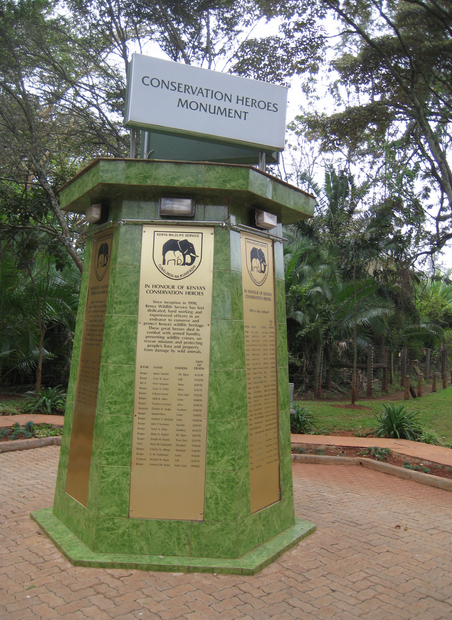
Picture above - KWS monument in honor of Kenyan Wildlife Rangers killed on active duty.
“Being a ranger was not a choice but a calling,” says Stephen Midzi, whose base is Shangoni Post in Kruger. “I was born for this, so had to fulfill what has already been written in my book of life.” Zakouma’s Ndotoingar says simply, “I’m proud of my work.” “Not a single guy has quit,” SANParks’ Jooste notes, adding that without the rangers like Midzi, poaching statistics would be a lot worse. “Look what would happen if we weren’t here.”
Every four days in Africa and around the world a ranger or Anti Poaching Operative is killed in their line of work. Many either face a quick death, are killed by contract shooters or tortured to death. The risks are endless yet wildlife security forces still risk their lives despite pittance [very little monetary income].
As explained International Animal Rescue Foundation Africa is challenging the South African government on shooting to defend of which the organisation wants a clear and precise “shoot to kill” law introduced for wildlife rangers and Anti Poachers not just SANDF. Furthermore I.A.R.F.A. calls on the government to not only authorize rangers to adopt this method of conservation but implement a NO conviction No Legal action clause within contract. Training and more equipment to be supplied to rangers too and rangers with no firearms to be equipped without delay.
International Animal Rescue Foundation Africa doesn’t stand alone either when it comes to such licence to kill policy. Over 90% of South Africans questioned agreed that a shoot to kill policy must be enforced to send a clear and precise message to poachers and king-pins that poaching will not be tolerated within the country. Should the organisation win it could see rangers in other countries authorized a licence to kill. Kenya is one such country on the continent of which KWS - [Kenyan Wildlife Service rangers] not only face death from poachers but are also heavily outnumbered by poachers that are slaughtering rhino and elephants.
The Peoples Verdict - Licence to Kill;
Back in November International Animal Rescue Foundation Africa and India started a public debate with regards to the shoot to kill policy. The debate has thus far seen quite a prolific response from which can be read below. Quite astonishingly we counted a mere dozen or more responses that were against the shoot to kill policy, whereas over 2,000 responses based from our Indian and South African debates called for a shoot to kill policy to be implemented.
Below is a handful of extracted responses for you all to read. You can join the debate by logging onto Facebook and clicking the link below. Alternatively you vote via our poll that will be the second third poll this year of which we will collect all results and begin passing these on to the government and ministries throughout Africa.
Roxanne Cochran stated - I am from South Africa. I agree fully with this notion. If they’re willing to take a life, they should be prepared to be shot down dead too. It’s very sad to see that most rhinos here have had there horns cut down for protection. It’s not natural and it breaks my heart that we have to go to such extremes to protect these beautiful creatures.
Gavin Hastings stated - Hello all, I am a serving soldier of the SANDF; I am just back from my 3rd deployment of 6 months from the Kruger. The problem id like to address is not man power or resources, it is the government of the country of South Africa and Mozambique who are now collaborating in the elimination of the species of rhino thanks to the bureaucratic impasse given to poachers of rhinos. As a soldier I am now “arresting” poachers. It is very difficult to maintain success and morale if you capture a person and he is extradited to re-do his killing the next week. I ask the international community to pressure my government. We need legislation to properly take care of the species survival and give the killers their fair due.
George Chimbai stated - In my country Malawi rhinos were once extincted and were re-introduced in the 1990s with rhinos from South Africa, without that Malawi wouldn’t have been boasting of having the BIG FIVE in its national parks and game reserves. South Africa as a supplier of endangered species to countries where they’re facing extinction I welcome and support the SHOOT TO KILL POLICY of these poachers.
Leisa Cope stated- I agree with shoot to kill only because I don’t see any other option. The consequences of killing animals not only brutally but into extinction needs to be this intense to at least make poachers think twice about what they are doing. If poachers choose to risk their lives then this is their own decision. How sad it is when it comes to this form of action.
Berdine Helderberg stated - Definitely shoot to kill - although, a warning shot might be needed first? (Legal wise..) Poachers know what they are doing, they know it is wrong and because they know they are untouchable, they continue committing these horrible horrible crimes. They simply do not care about the intense suffering of the animals and sometimes the babies too. If you can do it to a defenseless, helpless animal, you will do it to a human being too. Lastly, they will shoot any person that comes in their way, not thinking twice.
Kerryn Hay stated - Shoot to kill definitely. I have no sympathy for poachers even if they are disadvantaged/uneducated and trying to put food on table as some of you have argued - they are making the decision to brutally murder helpless animals and every action has consequences. Kill these criminals! why are we even considering giving them rights when animals have none. If it’s working in India then we must try it because nothing South Africa has done has helped thus far and time is running out while we debate the rights of ruthless criminals! I would prefer to see them die as slowly and painfully as the animals that they murder but let’s shoot to kill and make an example of them!
Heather Smith stated - These poachers are killing innocent animals, so why shouldn’t they expect the same treatment. Rangers are shooting to save these animals lives, poachers are shooting purely for money. You have my support all the way. Shoot to kill!!! Just as the poachers do.
Debbie Olivier stated - South Africa wake up! Allow our rangers to shoot to kill - no questions asked. We have entrusted our wildlife to them - we need to trust them with this too as they are well trained.
Donny De Mars stated - Why shouldn’t there be a shoot to kill law? I mean what makes you think these poachers would not do the same for any unarmed ranger who tries to bring them in. They are no better than drug traffickers and deserve even more severe punishment! A life for a life.
Robert Cates stated - I think a shoot to kill policy/law should be enacted not only to stop dead the ones doing it now, but also to SHOW/deter others thinking about doing it. I don’t think it should be even controlled by the police department… I think it should be an open season sort of policy… that should really put the scare in them.
Whoozie Blue Marlene stated - If you were running away from a bank having stolen a rare pink diamond the. The police would shoot you down dead. Are our rhinos not rare enough, aren’t they our beautiful pink diamonds?. Telling a poacher to stop or else does not work and if it does they are back in business chop chop. If this was installed it would work simply because no one wants to die. God left these animals in our care, so far the care has not been good enough I’m afraid. Protect our Rhino please because enough is enough !!
James Kipterem stated - I agree! Because rangers too are being targeted by these evil minded poachers. Even poachers, they have the same thought of “shoot to kill” whenever they meet rangers. So shoot to kill is the only remedy to a poacher, because, why break the law which we were passing together? that, ‘it is illegal to kill wild animals’. Instead of defending the law you break it. That is very bad. Always law defenders are more than breakers.
Jannette Slabbert stated - Any bad behavior must have real and costly consequences or you will never change it prison is obviously not enough of a penalty so if loosing your life is the price then so be it. It has proven effective in India then I say put the policy in SA too.
Russell Gordon stated - Future generation will blame us for not doing enough to have prevented the total extinction of the Rhino. So to address this now to preserve the Rhino for our future generations poachers and their ring leaders need to feel pain and by that I mean the ultimate sentence, the death penalty.
Laurian Knop stated - I vote shoot to kill poachers in self defense. Poachers are always armed and chose to kill the helpless and innocent. How many rangers have lost their lives to poachers? Self defense is not murder. Protecting those unable to defend themselves is not a criminal offense. Poachers are a scourge that need to be wiped out as they facilitate a bigger epidemic of terrorism, trafficking of drugs and children and general corruption. Why is this even being second-guessed? Do those opposed have something to lose should it be implemented?
Chris Switzer stated - I believe the continuity of a species, far outweighs any issues that might be brought up with regard to a shoot to kill policy. Poaching an endangered species, many of which on the brink of extinction, should be punishable by death.
Annmarie Botelho stated - I think that south Africa should have shoot to kill laws… if it keeps going the way it is we are going to lose are elephants and rhino …. it’s such a cruel trade and there really isn’t any need for it.
Gillian Curley stated - I don’t like the shoot to kill as the poachers are just doing what they are told to do and feed their families BUT something has to be done and if we can’t get the leaders and the buyers then yes sadly I agree to shoot to kill.
Marisol Davila stated - A policy of shoot to kill poachers will be a deterrent for the poaching business. Due to lax policies wildlife numbers are in the brink of extinction. Many economies depend on the tourism that wildlife attracts. Therefore, a harsh policy against poachers and their customers is key if any country wants to strengthen it’s economic survival in the long run. The message need to be loud and clear zero tolerance to poaching, no bits or ifs allow.
To take part in the debate that International Animal Rescue Foundation Africa is running you can comment by clicking here alternatively you can also hit the poll button below and tell us what you want. Please be aware that the poll expires one week from the date of this article of which we will not run another poll.
BEFORE voting please view the video below.
Conclusion;
International Animal Rescue Foundation Africa last year created data models that indicated their worst fears regarding wildlife poaching based on poaching deaths, natural deaths, gestation, deaths of unborn fetus, decreased populations of other larger fauna such as elephants and more. Model data has already shown that South Africa’s poaching rate will continue to increase and has provided very worrying numbers of final statistics supported by defense organisations working hard to stem the flow of poaching.
While none of us wants to see, read or hear of any living creature death - We must send a more stronger and decisive message into Asia and African poaching communities, and while tackling poaching is one thing we’ve also poverty to engage that will take the temptation away from individual opportunistic poachers that kill to fend for their families. Its these very communities that Asian traffickers and king-pins target as they know they are easy prey.
Look at it simply like this. If your living with no food, no electricity, no sanitation and require health support, are barely feeding your family or even yourself and living within a country that is doing little to decrease poverty then you will snap the chance up at anyone given moment to make money. Conservation organisations and leaders of Africa and world leaders must do more to decrease poverty around wildlife parks.
Failing this Data Models have shown that the white rhino will be verging near endangerment by 2017 of which the black rhino could be extinct in under five years within the wild [despite populations increasing]. Furthermore while the continent of Africa is still custodian to thousands of elephants, elephant populations are becoming more fragmented. Yesterday I.A.R.F.A reported a massive decline in South Sudan elephant populations that now stand at some 2,500. Giraffe populations are now at some 40,000 for the entire continent of Africa.
Bottom line is should Africa lose vast swathes of her wildlife then tourism will be affected too. Tourism brings in billions for the entire continent of Africa of which Africa’s wildlife is seen as the number one tourist attraction. A large number of countries depend on tourism for the economic growth. A recent study done for DFID concluded: “While poor countries only command a minority share of the international tourism market, tourism can make a significant contribution to their economies.
Eighty percent of the world’s poor (below US$1 a day) live in 12 countries. In 11 of these, tourism is significant and/or growing. Of the 100 or so poorest countries, tourism is significant (accounting for over 2% of GDP or 5% of exports) in almost half the low income countries and almost all the lower-middle income countries.” Using these same criteria and 1996 data, tourism is “significant” in an impressive number of African countries: Benin, Botswana, Burkina Faso, Cape Verde, Comoros, Djibouti, Eritrea, Ethiopia, Gambia, Ghana, Kenya, Madagascar, Mauritius, Namibia, Niger, Senegal, Sao Tome & Principe, Seychelles, Sierra Leone, South Africa, Swaziland, Tanzania, Togo, Uganda, Zimbabwe. Zambia and Mali just missed the cutoff in 1996.
According to the World Tourism Organization (WTO), Africa as a whole attracts just fewer than 4% of total world tourists and accounted for 2.0% of international tourism receipts in 1997. Of the Sub-Saharan countries, only South Africa is listed in the top forty tourism destinations worldwide, where it was 26th in 1997. The WTO calculated [1996] that Africa had just over 3% of world accommodation capacity (796,000 beds). The Africa region showed the strongest expansion in arrivals of any world region in 1997, up 8.1% over 1996. Furthermore, during the 1988-97 decade, Africa had an average annual growth of 7.2% in visitor arrivals, only slightly lower than East Asia/Pacific, which had the highest growth rate of all regions though from a much higher base than Africa. The average annual growth rate for tourist arrivals worldwide has averaged 5.0% for the past decade.
However - the number of tourists now arriving in SSA has grown over 300% since 1990, with 2012 marking a high of 33.8 million tourists who visited the region. Income generated from tourism has also climbed: Receipts from hotels, tours and other attractions in 2012 amounted to over US$36 billion and directly contributed just over 2.8% to the region’s GDP, according to the report issued by the World Bank back in 2013.
Wild animals are probably one of the first things people think of when asked about Africa. Seeing all the documentaries on television, we can only wonder and watch in awe as these mighty creatures roam the plains and jungles. Many are now protected in reserves and tourists can venture out on varying safaris to watch them in their nature habitats. What an incredible experience for both the amateur and professional photographer! Zambia holds the most natural of parks because the area is not accessible between November and March due to the waterways. Since the animals, plants, birds, and other natural elements are left alone, the area is truly spectacular when viewed each year after this rejuvenation period.
Safari rates as number four on many tour guide questionnaires when asking tourists why they wish to visit Africa. So in all if we continue to see such a vast decline in wildlife and lack of hard core enforcement we’ll most certainly see a copious decline in tourism revenue. I don’t need to explain what that will spell either.
International Animal Rescue Foundation has been challenged by only Humans Rights Christian Organisation of which stated we should not lobby or enforce a licence to kill poachers. All that can be said to the Human Rights players is that when there are no animals left, and revenue is seen as shrinking because of this then the Human Rights organisations can visit Africa and tackle more violent crime, lack of any employment, rape, murder, and more.
The time to act is now and not tomorrow. Stand by International Animal Rescue Foundation and help us enforce a shoot to kill policy within South Africa, Kenya and Tanzania.
Thanks
Board of Directors for External Affairs - Ead
Chief Executive Officer of Environmental Projects Africa - Michael L. Rooste
Chief Environmental Officer & CEO Dr Jose C Depre
Chief Environmental Registrar Europa - J. F. Williamson
External Affairs and Lead Investigation Officer - Vincent Van der spuy
externalaffairs@international-animalrescue-foundation.org.uk
You can help us by donating, to donate click the picture below that will take you to our donation application on Facebook. Alternatively you can donate to our communications site listed hereto at
www.international-animalrescue-foundation.org.uk
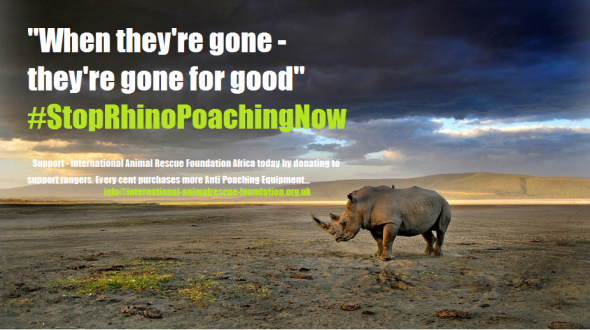
Dog Meat Is Big Business in Nigeria
In a city where animal activists are almost invisible, dogs are crammed into small cages and trucked into Calabar from North Nigeria, to the waiting hands of dog butchers who hack them to death for dog meat.
Nigeria has a booming dog meat trade and the city of Calabar is one of it’s biggest hot-spots, where dog meat is openly sold on street corners and eaten by a broad spectrum of people who refer to it as ‘4o4.’ Chunks of dog meat can sell for as little as a hundred naira (less than a dollar), while a whole pot of dog meat can sell for as much as N14,000 or $87.00.
In Calabar, eating dog meat is seen a way of relaxing for some people and they can’t see whats wrong with it. However, people in Calabar who are against eating dog meat say “It is inhuman to eat up a pet, especially a dog which can become a family member.” Dog eaters reply “It is something as old as our culture. Our forefathers ate dog meat and we grew up learning to eat dog meat and by all standards, it is ok”.
Dog eaters far outnumber non-dog eaters in Calabar where its pet meat trade is lucrative and no matter how many dogs they kill, there’s always buyers waiting to eat them.
Weekends are the busiest time for slaughtering and eating dogs, especially Sundays when people in Calabar like to get together with family and loved ones and relax and eat dog meat.
Interestingly, women in Calabar eat just as much dog meat as men. Throughout Asia, dog meat is eaten mainly by men and women are shunned from eating it for a variety of reasons, mainly because men believe dog meat boots a man’s virility and is therefore dangerous for women to indulge in.
Dog meat used to be restricted to certain areas in Calabar and was mainly served with palm wine. Due to clever marketing, dog meat in Calabar is now a mainstream food which is served like any other restaurant food, with multiple choices of side dishes and beverages.
Just like in Asia a few decades ago, dog meat has gone from being eaten secretly to chic restaurant food that’s accepted everywhere, thanks to some clever marketing by dog traders, dog butchers and dog meat cooks.
In the same way Saynotodogmeat.Net are fighting Asia’s dog and cat meat trade, we will continue to fight Africa’s cruel pet meat trade too. We won’t stop until the dog and cat meat trade is brought to an END in Africa and Asia.
Thank you for reading,
Michele Brown.
GLOBAL MARCH
Saturday April 4th, 2015 Saynotodogmeat.Net is hosting a Global March for dogs and cats in the live meat trade. Please march with us, in your country. It will be an orderly and peaceful march but we need more ‘demonstration leaders.’ If you can help us, PLEASE EMAIL: CONTACT@SAYNOTODOGMEAT.INFO
Bring your family, children, pets and banners; we need as many people as possible, worldwide. Please mark your calendar and join our march. If you haven’t already done so, please click the box to let us know you are coming: https://www.facebook.com/events/294347744053559/
WE ARE NOW ACCEPTING DONATIONS
Saynotodogmeat.Net is now accepting donations: PLEASE MARK ALL DONATIONS “SAY NO TO DOG MEAT.NET” https://www.facebook.com/SayNoToDogMeat/app_117708921611213
No donation is too small and we are very appreciative of your help and support. Very soon we will be writing a full article outlining where donations will be used. You will receive an electronic receipt and we will too, which we will keep for historical data purposes. NO DONATION will be used to produce clothing with logos on, badges or banners. Donations are NOT for the directors. ALL MEMBERS FUND THEMSELVES.
PLEASE CONTINUE TO SIGN AND SHARE OUR SAYNOTODOGMEAT.NET PETITIONS; WHEN COMPLETED THEY’LL BE WILL BE HAND DELIVERED
PETITION FOR SOUTH KOREA
https://www.change.org/en-GB/petitions/president-geun-hye-park-take-dog-cat-meat-off-the-menu
PETITION FOR VIETNAM and THAILAND ANTI-SMUGGLING
https://www.causes.com/actions/1764795-a-petition-to-president-truong-tang-sang-moj-prime-minister-yingluck-shinawatra
PETITION FOR HEALTH MINISTER OF VIETNAM
https://www.causes.com/campaigns/71258-minister-of-public-health-thi-kim-tien
PETITION FOR NAGALAND
https://www.change.org/en-GB/petitions/additional-chief-secretary-take-dog-meat-of-nagaland-menu
PETITION TO BAN THE TRADE IN NIGERIA
https://www.change.org/en-GB/petitions/governor-of-lagos-hon-babatunde-fashola-ban-the-nigerian-dog-meat-trade-lagos
LETTER TO THE PRESIDENT OF THE PHILIPPINES
http://saynotodogmeat.net/2014/04/04/email-the-philippines-president-to-end-the-dog-meat-trade/
PLEASE SEND TO THE MUSLIM COUNCIL
http://saynotodogmeat.net/2014/01/17/open-email-to-the-muslim-council-of-great-britain/
PLEASE HELP THE PEOPLE OF TURKANA HERE
http://saynotodogmeat.net/2014/01/31/turkana-africa-emergency-aid-letter/
EMAIL THE GOVERNOR OF NIGERIA: New Address: info@nigeria.gov.ng
http://saynotodogmeat.net/2013/12/03/email-excellency-dr-honorable-alausa-excellency-honorable-babatunde-fashola/
JOIN THE WORLDWIDE GLOBAL EVENT HERE TODAY
PLEASE EMAIL US A.S.A.P FOR INFORMATION ON HOW YOU CAN HELP. SATURDAY 4TH APRIL 2015 – TIME TO MARCH FOR DOGS AND CATS IN THE MEAT TRADE.
JOIN HERE https://www.facebook.com/events/294347744053559/ SHARE EVERYWHERE WILDLY
SayNoToDogMeat.Net FACEBOOK and TWITTER
Email: contact@saynotodogmeat.info
#saynotodogmeat
ALL RIGHTS RESERVED
PLEASE CREDIT THE ORGANISATION WHEN SHARING
Child Abuse?
Meet Max Arredondo pictured below he’s aged from which he shot this Zebra with quite a heavy firearm within the Eastern Cape of Southern Africa. Aged just six its quite hard to actually take on board that there are parents out there teaching their children to kill animals. Unfortunately Max Arredondo is not the only child that is being taught to kill animals on the continent of Africa. Data reviewed by International Animal Rescue Foundation Africa has revealed more and more parents are now taking their children on safaris thus teaching them to kill.
This species of Zebra is not endangered, nor threatened.
Below is a comparison showing the legal ages to hunt and own firearms to that of the legal ages to watch films, play games
Speak up for the Voiceless.org has documented quite heavily on child hunters. Our partners International Animal Rescue Foundation Africa are now lobbying the Department of Environmental Affairs - Hon Edna Molewa head minister to introduce laws that will hopefully ban children from hunting. While its quite impossible to actually ban hunting in general, it is our duty of responsibility to now call for more tougher laws that “protect both children and animals”. Protecting children from adult violent activities and protecting animals from uneducated and inexperienced hunters that can inflict more pain and suffering to an animal. While Max may be an “educated” hunter it quite concerning to know that at such a young age his brain has been exposed to such violent activities.
In reality a mother or father teaching their child to kill an animal legally or illegally with a high powered weapon is no different to that of a parent placing their child in front of a (adult rated) television program that contains swearing, death, animal killing and more. Take a look at the following video below from YouTube like many hundreds online is classed as “age-restricted based on our Community Guidelines”. Its not just YouTube either that place these restrictions of which you require a Gmail account too log into.
YouTube state;
Age-restricted content
In some cases, real, dramatized or fake violence may not be suitable for all ages. “Similar to movie or television ratings”, our age-restrictions help viewers avoid watching content that they may not feel is acceptable for themselves or for their children.
YouTube goes on to state;
What we consider to be agree restricted
- Whether the video shows scenes containing physical attacks where the injury sustained is bloody or gory.
- Whether the video shows the graphic aftermath of a violent act.
- Whether the shots of violence or gore are the focal point of the video.
- Whether the violence contained in the video is realistic when posted in a dramatic context.
In South Africa, a temporary firearms and ammunition importation permit will only be issued at the port of entry if the applicant is twenty one (21) years of age or older. Does this law apply to native citizens too? Of course it does. The minimum age for gun ownership in South Africa is 21 years, with some exceptions that may include the fact that the applicant conducts a business, is gainfully employed, a dedicated hunter, a dedicated sports person or a private collector. Max pictured above is not anywhere near the minimum - he is six however doesn’t own this rifle. Laws state that you have to be 16 or older to hunt within South Africa, in some provinces the laws state that you have to be 14 years of age. The hunt above was most likely on a farm of which “no laws apply” to this activity. Had it been in the wild the chances are father and mother would be in a spot of bother.
In South Africa film are classified by the Film and Publication Board.[74] All broadcasters, cinemas and distributors of DVD/video and computer games must comply with the following:
- A: Suitable for all.
- PG: Parental Guidance
- 7–9PG: Not suitable for children under the age of 7. Children aged 7–9 years old may not be admitted unless accompanied by an adult.
- 10: Not suitable for children under the age of 10.
- 10–12PG: Not suitable for children under the age of 10. Children aged 10–12 years old may not be admitted unless accompanied by an adult.
- 13: Not suitable for children under the age of 13.
- 16: Not suitable for persons under the age of 16.
- 18: Not suitable for persons under the age of 18.
- X18: No One Under 18 Admitted; restricted to licensed adult premises.
- XX: Must not be distributed or exhibited in public.
Films that contain violence, death or “adult” content under South African law with regards to (PG) - 7–9PG: Not suitable for children under the age of 7. Children aged 7–9 years old may not be admitted unless accompanied by an adult.
As one can clearly see laws within South Africa are somewhat odd. Its “just reasonably” OK-ish to place a firearm within your child’s hands at the age of six and allow him or her to hunt an animal of which this is classified as “a violent and abusive act” but not reasonable to allow your child to view a “violent act[s] or abuse[s]” under the age of seven. Max in this case is 6. How does a violent video or game differ from that of a child taking a shot at a Zebra? It doesn’t of which this is in all due respects child abuse.
Exposing Children to Violence or Violent Acts
FACT - In 2011, nearly 60 percent of children (ages 17 and younger) were exposed to violence within the past year, either directly (as victims) or indirectly (as witnesses). Detailed documentation related mainly to domestic abuse, bullying, murder, animal abuse, rape, other. Regardless of what the type abuse children were exposed too, abuse is abuse no matter how much you try to sugar coat it, make it sound legal or necessary. Placing a gun in a the hands of a child at the age of six while the brain is still developing from 0-21 years of age is “exposing a vulnerable person” to abuse that can later on enact these same type of abuses out from which they see as “normal practice”.
Children are more likely to be exposed to violence and crime than adults are. An experience of violence can lead to lasting physical, mental, and emotional harm, whether the child is a direct victim or a witness. Children who are exposed to violence are more likely to suffer from attachment problems, regressive behavior, anxiety, and depression, and to have aggression and conduct problems. Other health-related problems, as well as academic and cognitive problems, delinquency, and involvement in the child welfare and juvenile justice systems, are also associated with experiences of violence. Even community violence that children do not directly witness has been shown to affect negatively children’s attentional abilities and cognitive performance.
One mechanism through which early, chronic exposure to violence affects children is by disrupting the developing brain. Specific brain structures (amygdala, hippocampus, prefrontal cortex) are adversely affected by stress. Executive functions (such as planning, memory, focusing attention, impulse control, and using new information to make decisions) can become impaired. Moreover, children who have had chronic exposure to real or perceived threats may become conditioned to react with fear and anxiety to a broad range of circumstances. Their diminished capacity to differentiate between genuine threats and objectively safe or neutral situations can impair their ability to learn and interact with others, and may lead to serious anxiety disorders. Unfortunately, while fear learning happens early in life, with emotional memories that are powerful and persistent, unlearning fears depends upon brain maturation that happens only later, and requires active work and evidence-based treatment.
Children exposed to violence are more likely than those not experiencing violence to become victims or perpetrators of further violence.
In conclusion exposing children to violence does impair their own understanding of violence in itself. If a child has been taught a violent act and is educated on inflicting violence then what’s to say that child will not then inflict that violence onto another person or animal. We see this form of child abuse as one of the worst simply because the child has been in one way or the other “educated”. They know how to use a rifle, their fear of death and wrongdoings is decreased, empathy and care although still present is somewhat pushed aside. A child not exposed to violence but love will show more compassion and emotion at seeing a dead, injured of suffering being than that of a child exposed and educated of violence acts. The video below depicts how Green Mile Safari had their hunting licences revoked after many breaches of hunting activities. Children hunting, running over dead animals in cars, hunting animals from a moving vehicle and more. Believe it or not there are many more cases such as these on South African farms from which many tourists and their families visit.
Thank you for reading. To stay up to date on African wildlife affairs please visit our Facebook page here.
You can also sign petitions below.
https://www.causes.com/campaigns/34435-stop-any-kind-of-safari-hunting-in-africa
http://www.change.org/p/stop-canned-hunting-in-south-africa
https://www.change.org/p/hon-gianni-pittella-ban-lion-and-rhino-trophies-into-the-european-union
Restriction of Lion and Rhinoceros trophy imports into the the European Union.
OPEN LETTER & SENT COMMUNICATION
President José Manuel Barroso
European Commission
Berlaymont, Rue de la Loi, 200
1049 Bruxelles
Date: 17th October 2014
Re: European Legislation on Restriction of Lion and Rhinoceros trophy imports into the the European Union.
Brief summary;
We “International Animal Rescue Foundation” call for European Legislation to restrict the importation of sport hunted Lion and Rhino trophies (only) from “any country” into all European Countries within the European Union. We the named herein only support imports of Lion and Rhino parts or carcasses for veterinary science and museum artifacts for educative purposes only.
Dear President José Manuel Barroso;
Your Honorable José Manuel Barroso We International Animal Rescue Foundation Africa ask for your support to implement law[s] to restrict the import/export of Lion and Rhino sport hunted trophies into the European Union from (any country or continent). As set out under the European Union Legislation / Environmentalism and Preservation procedure stated hereto; http://eur-lex.europa.eu/legal-content/EN/TXT/?qid=1413671152558&uri=URISERV:l11023 it is the European Union and Commissions responsibility to protect the biodiversity and natural habitats of both Fauna and Flora. As we see it (now) the European Union/Commission and Parliament is failing within its duties under Protocol one of the Council Regulation (EC) No 338/97 of 9 December 1996 on the protection of species of wild fauna and flora by regulating trade either live or dead of Lion and Rhino trophies and/or parts.
We International Animal Rescue Foundation Africa call on the European Commission to now regulate trade of both sport “hunted” Lions and Rhinos under the Act of Council Regulation (EC) No 338/97 of 9 December 1996 on the protection of species of wild fauna and flora by regulating trade for the reasons as set out herein for your information.
Restrictions on sport hunted Lions and parts under Council Regulation (EC) No 338/97 of 9 December 1996 on the protection of species of wild fauna and flora by regulating/restricting trade;
- Since the early 1980’s we have lost countless individual Lions and Rhinos to sport hunters and poachers within Africa. While sport hunting may not be seen as a overall major threat to both species of Lion and Rhino it is having a detrimental effect on the now shrinking populations of Lions in Africa. And with regards to “poaching” of Rhinos something now has to give. The Rhino cannot any longer compete with the vast number of poaching incidents occurring daily of which has placed the Rhino now at tipping point. All in all your excellency should the candle continue to burn at both ends we will lose both ionic species of mammalian in under two decades. Poaching is raging out of control within Africa threatening many species alike. With South Africa being the largest country hit by poachers and visited by thousands of European and American tourist hunters a year, time must now come that we as a European Union must take evasive action to slow down and/or halt (extinction). The reasons are set out below for your information.
- A century ago there were some 200,000 Lions roaming all over the African continent. Now there are no fewer than a mere 30,000 if that with the lowest estimated figure pointing to a possible 15,000. Within the Lions existing ranges there are no more than 1,000 Lions within each of its African habituated countries of which there are more Lions within canned hunting farms and ranches than in some wild populated areas. Those Lions within canned hunting farms and ranches pose a disease and genetic risk to other species of fauna and wild Lion populations that live around these facilities.
- Over the last ten years a staggering two thirds of all Lions hunted for sport were imported from Africa into the United States of America Between 2000 and 2008, some 4,250 wild lions were exported as trophies most of which into the European Union although America was the largest importer and still is to date.
- African Lions have vanished from a whopping 80% of their range of which hunting, habitat fragmentation, human species conflict and unsustainable agriculture are primary causes for Lion depletion.
- Lions have become extinct in 26 countries. Only seven countries – Botswana, Ethiopia, Kenya, South Africa, Tanzania, Zambia and Zimbabwe – are believed to contain more than 1,000 lions each. Panthera leo is bordering endangerment. Should restrictions not be implemented and or bans put in place then it is a sad fact of life we will lose a further 1/4 of all mature individuals thus seeing more Lions pushed from extant into “regional” extinction.
- Although the single biggest threat by far to the animals survival is humans, though not necessarily western hunters. It is just the very, very widespread killing of Lions, mostly in a conflict situation, by anyone who is trying to farm livestock in Africa and finds it very difficult to co-exist with Lions. Hunting of Lions though is still playing a great role in reducing further species of which is seeing many Lions wild and captured depleted. Furthermore the black market trade in Lion bone wine threatens our Lion species greatly. International Animal Rescue Foundation Africa has already this year seen further evidence of European’s involved within the black market trade of Lion bones generating hundreds of thousands “in all”.. While this evidence is within the public domain and has been for some years why are we still not taking the relevant steps to secure the species future?
- Between 1999 and 2008, 64% of the 5,663 Lions that were killed in the African wild for sport ended up being shipped to America, it must also be noted numbers had risen sharply in those 10 years, with more than twice as many Lions taken as trophies by US hunters in 2008 than in 1999. Should US hunters continue their rampage followed up with EU hunters least forgetting habitat destruction then its quite likely we’ll begin to see more loclised (regional extinctions) within the next five years. In addition to personal trophies, Americans are also the world’s biggest buyers of Lion carcasses and body parts, including claws, skulls, bones and penises, Asians the second largest and Europeans the third largest buyer. In the same years, the US imported 63% of the 2,715 Lion specimens put up for sale. While the United States, Asia and Europe hunters buy and sell the demand for Lion parts continues thus seeing the species threatened furthermore.
- From 1996 – 2008 species populations of Panthera leo has not increased but decreased furthermore seeing few localised extinctions. The African Lion is still listed as vulnerable on the International Union for the Conservation of Nature’s Red List of Threatened Species. Listed as Endangered is the next step - then we will most certainly see the Lion species in danger furthermore.
- Demand from the Far East is also driving profits for Lions breeders. In 2001, two Lions were exported as “trophies” to China, Laos and Vietnam; in 2011, 70 Lion trophies were exported to those nations. While the trade in Tiger parts is now illegal, demand for Lion parts for traditional Asian medicine is soaring. In 2009, five Lion skeletons were exported from South Africa to Laos; in 2011, it was 496. The legal export of Lion bones and whole carcasses has also soared. While Tiger populations decrease so will Lions too.
- Lastly Eastern European countries such as Russia not aligned with the Cites convention nor the “European Union” are actively selling Lion skins into the market to produce rugs, upholstery, and furniture. This is a threat in its own and with all factors above combined with the trade in Eastern Europe we must now protect our Lion populations more than ever.
Restrictions on sport hunted Rhinoceros and parts under Council Regulation (EC) No 338/97 of 9 December 1996 on the protection of species of wild fauna and flora by regulating/restricting trade;
- In the early 1950s, when Mao Zedong promoted so-called traditional Chinese medicine (TCM) as a tool for unifying the country he had recently come to lead. Even though Chairman Mao himself did not believe in TCM, he called for its use over Western medicine. Among the many “cures” touted by China’s “New Medicine” was powdered Rhino horn, which was said to cure everything from fevers to cancer. Since Mao made this public Rhinos have been decimated at staggering proportions mostly by poachers. However now as the demand the Rhino horn has increased rapidly within Asia of which the horn can fetch on the market between $50,000 and $70,000kg hunters have been caught in many stings peddling Rhino horns from their “legally” obtained trophies to supply the (TCM) market. Since the year 2000 we have lost over 3,000 Rhinos just in South Africa alone.
- Between 1960 and 1995 an astonishing 98 percent of black Rhinos were killed by poachers, either to feed the new and voracious demand for TCM or, to a lesser extent, for horns to be used as ceremonial knife handles in the Middle East. From 2000 onwards both White and Black Rhino populations are now being hit hard by poachers, every day we lose a further 3-4 Rhinos in South Africa alone custodian to the worlds largest remaining Rhino crashes. Evidence. All rhinos suffered; the western black Rhino, already weakened by decades of overhunting, was the hardest hit. The white Rhino is now at “tipping point”.
- Back in 2012 the Department of Environmental Affairs (South Africa) banned Vietnamese hunting permits due to the popularity of pseudo hunting and the then past arrests of the Gronwald poaching gang and Chumlong Lemtongthai whom hired pseudo (hunters) from Thailand and possibly other fake hunters from Vietnam. Although banned - Vietnamese hunters this hasn’t stopped foreign citizens from joining in the hunting/poaching trend. It was stated by Hon Edna Molewa and Cites that Eastern European hunting applications had shot up from 2012 by some 1000% of which its now known that Polish, Russian and Czech Republic hunters are mostly pseudo hunters cashing in on the Rhino horn demand thus supplying the Asian market in Vietnam, Laos and China with Rhino horn. Whilst this is clearly evident and “legitimate” hunting practices still ongoing this is placing more pressure on the Rhino species decreasing their populations even more of which this “fake and legitimate hunting” plus poaching has led to the Rhino populations decreasing furthermore.
- Trophy hunting does not rake in revenue - A study on the economic benefit behind Lion hunting for example in Africa concluded, “The suggestion that trophy hunting plays a significant role in African economic development is misguided…Revenues constitute only a fraction of a percent of GDP and almost none of that ever reaches rural communities.” Dr. Naomi Rose agrees as stated on the HSUS blog, “Regarding the statement that trophy hunters do a lot for conservation, it’s true that some portion of some hunters’ fees goes to conservation in some countries, but it’s rarely the major source of conservation funding. Usually middlemen—commercial outfitters—take the lion’s share of sport hunting proceeds and local communities and conservation and management agencies get the dregs.” And its quite evident that trophy hunting is not generating revenue - if it was then why is this “alleged $200 million” not seen poaching tackled. It would be quite fare to say that $200 million x 4 years = $800 million is quite enough to sustain species welfare. Yet it hasn’t which is why we call for an immediate ban of LION and RHINO trophies into Europe.
- White Rhino is currently listed on the International Union for the Conservation of Nature’s Red List as (near threatened) Whilst we are aware that evidence has shown an “increase” of White Rhino populations poaching from either African “poachers” legal hunters and others caught (illegally poaching) has since pushed the species of White and Black Rhino to tipping point. Both Rhino species are normally gestate no longer than 15-16 months. One Rhino cow regardless of the species produces a new born every two to three years. However we are losing species of both Black and White Rhino at 3-4 every day. International Union for the Conservation of Nature has placed the number of White Rhinoceros populations at 20,160 (2010). Since 1990 and including the recent poaching figures for (October 2014) we have lost a total of 3,803 Rhinoceros. Most of these deaths have occurred in South Africa that holds a total of 93.2% of the worlds largest Rhino populations. 3,803 is not including “collateral damage” such as unborn fetus nor natural deaths. If we took unborn fetes and natural deaths into account with that of the 1990-2014 poaching figures its quite likely that the current population trend of White and Black Rhinos is nowhere near the 2010 figures of 20,160. As of 2012 International Animal Rescue Foundation Africa communicated to Hon Edna Molewa. In writing Molewa basically quoted from the IUCN the population of Rhino has increased “ten fold” mostly helped by hunters. Yet there is no evidence of such increases by even a “five fold” and if such hunting practices had increased the White and Black Rhino population then why is the Rhino populations within Africa now “threatened and still endangered” of which are standing at “tipping point”? The answer is quite simple. Our “wild Rhino” populations are decreasing rapidly. What Hon Edna Molewa most likely meant was that Rhino populations had increased ten fold on “hunting reserves” while the remainder of the wild populations the government nor Non-Profits know little about. No official census of the wild populations have been seen since the early millennium either. This gives us reason to now ask that all Rhino trophies and parts acquired via trophy hunting are banned from export/import into Europe unless for scientific and/or museum purposes. Why did Molewe not answer International Animal Rescue Foundation’s questions in full? Rather than simply copy and paste a number from the IUCN website? We believe this is because the South African government know little about their own populations of Rhino and what the real figure of wild populations of both black and white stand at. Moving back to the Census - A group of Rhino Activists did lobby the South African government (early 2012) asking for census within their (9 point plan) to be conducted supported by over 29,000 people.
- Rhinos still under threat no matter what the South African Government try to do to stem the poaching crisis - 2012 Vietnamese hunting permits were banned due to pseudo hunting. Department of Environmental Affairs believed this would someway “reduce the poaching crisis”. October 2014 though saw yet another Rhino poaching kingpin and accomplices being vets, pilots, even “HAWKS” police, arrested along with the leader himself Hugo Ras a South African hunter and attorney. Ras was known the police with regards to “poaching crimes”. The group is alleged to have contributed to the brutal slaughter and mutilation of 24 Rhinos in state and privately owned game reserves, resulting in 48 horns poached. Only two of the 24 Rhinos that had been attacked, survived, but they were de-horned after they had been darted. Twenty two of the Rhinos were darted with the veterinary drug M99, the other two were shot. An additional 36 horns were either stolen or obtained through other illegal means. The killings took place between 2008 and 2012, during which period the syndicate illegally obtained 84 Rhino horns and killed 22 Rhinos valued at nearly R22 million. International Animal Rescue Foundation Africa and International Animal Rescue Foundation Europe call for an immediate ban of all Rhino parts and trophies into Europe because there is more than likely more Rhino poaching syndicates operating of which Europe is being used as a transit route to peddle legally Rhino “trophies” through onto Asia. By cutting one of the main transit routes out we help to disrupt trade and demand furthermore.
- The rate of Rhino deaths has surpassed the rate of births. Rhino poaching has accelerated to a dangerous level. With deaths outweighing births, it puts their species just a few short years away from extinction. 1990 = 14 deaths, 1994 = 27 deaths, 2002 = 25 deaths, 2006 = 36 deaths, 2008 = 83 deaths, 2009 = 122 deaths, 2010 = 333 deaths, 2011 = 448 deaths, 2012 = 668 deaths, 2013 = 1004 deaths and to date October 2014 we stand almost at 900 deaths. While the majority of these deaths have been caused by African poachers killing Rhino to supply the Asian black market hunters, game wardens, farmers, veterinary officers and more are also contributing to deaths that we are still fully unaware of. While SAPS and HAWKS are flushing out corrupt hunters, wardens and vets poaching and corrupt hunting continues. What seems legitimate trophies being exported out off Africa in Europe could well be more sinister. Hence the reasons we call for a trophy hunting ban of Rhino into Europe from Africa based on the level of illegal poaching and that of pseudo poaching that has already been shown to be supplying the black market within Asia.
Since publishing our main petition aimed at Hon Gianni Pittella EPP, Hon Manfred Weber S&D, Hon Martin Schulz President of the European Parliament, Hon Herman Van Rompuy President of the European Council, Hon Jean Lambert MEP and Hon Keith Taylor MEP including yourself your Excellency we have amassed a total count nearing nine hundred signatures that call for a restriction of sport hunted Rhinos and Lions into all European member countries. Australia has already banned the importation/exportation of sport hunted Rhinoceros with a further ban expected of sport hunted Lions.
International Animal Rescue Foundation Africa lobbied with many other Non-Profits the United States too as of last year that has since prompted Director Daniel Ashe United States Fish and Wildlife Service to now look into banning/restricting sport hunted Lion trophies into the USA. Australia and the United States are taking leading steps here and setting positive and professional examples. However as yet Europe is still dragging its heals. While we continue to drag our heals both Lions and Rhinoceros continue to edge closer and closer to extinction. The time for the healing of the wounds has come your excellency.
Sincerely yours
Board of Directors
Josa C. Depre
Jon E. Williamson
Helen S. Farthing
Rosalyn Simon
J. C. Dimetri
Muhammad A. Muller
Sonya T. Franklin
Johan N. Strauss
info@international-animalrescue-foundation.org.uk
Please sign the petition here
Plastic Bag Syndrome.
Shopping bags. Yes I’m going to bore you this Wednesday about your over-usage of shopping bags and how these bags are helping to destroy our environment and are responsible for the deaths of many hundreds if not thousands of animals per year. This article may be boring to some, however I am sick to the core of seeing so many people in hyper-markets purchasing bag after bag just for them bags to later be thrown away. Once you’ve thrown that precious bag away you have then contributed to littering the Earths already fragile ecosystem and trust me the damage doesn’t even stop there….. Its time for a little consumer education…
Brief History;
Believe it or not but plastic bags are becoming a serious environmental problem. So serious that many countries globally have imposed charges for all bags now paper and plastic. You’d probably think that even with a charge of say a few dollars the consumer would keep the bag and then reuse it. However some do many do not. Regardless of the charges imposed production of plastic bags and purchasing still continues. As human population increases so will demand for shopping accessorizes.
Two hundred and sixty seven different species of animals and plants have been known to be affected by plastic bag wastage. Over 100,000 marine animals, including highly intelligent, adorable sea turtles, whales and dolphins, die every year because of plastic bags. The die because of your selfishness. While conservation organisations are helping to clean the seas, beaches and lands of your waste the production of bags continues at a staggering rate. To be precise every five seconds sixty thousand plastic bags are produced every “five seconds” just in the United States alone. That’s one hell of a lot of bags.
The damage plastic bags cause to our wildlife is catastrophic as one can see in the picture below. Even when animals that have died and decomposed digest plastic bag particles or whole plastic bags the bag still remains intact. It takes over one hundred years or more for your average plastic bag to decompose. In that time the digested plastic bag has most likely poisoned another animal or killed a further whale or even a Tiger or Lion.. Even Africa’s pristine parks are not safe from littering so don’t think for one moment that plastic bag refuse is just confined to our oceans.
The picture above depicts a dead decomposing seabird. Look closely though. You can make out many different plastic particles. Lighters, bottle tops and pieces of plastic bag garbage that would most likely have led to this animals painful death. And as explained marine animals are not the only species threatened by plastic bag garbage. The picture below depicts cattle that have also fallen prey to the plastic bag menace. Digesting such toxic plastics can lead to many physical complaints that can lead to eventual death.
Hundreds of cows die annually from choking on plastic bags containing vegetable waste
In November 2008 in Australia, a 10-foot-long crocodile tagged as part of a government wildlife-tracking program turned up dead, having consumed 25 plastic shopping and garbage bags. Whitey, as the crocodile was dubbed, had been relocated to a popular tourist destination called Magnetic Island, and authorities at first feared that he had died as a result of eating garbage left behind by visitors. Said Keith Williams of the group Australian Seabird Rescue, however, “Whitey probably was picking up plastic long before [being moved].”
Plastics take hundreds, perhaps even thousands, of years to break down in most environments, such that it is not a stretch to imagine a single bag killing more than one animal over a very long lifetime on land and sea. And while the statistics are incomplete, some conservationists estimate that at least 100,000 mammals and birds die from them each year, felled by the estimated 500 billion and more plastic bags that are produced and consumed around the world; the numbers of fish killed by them are unknown, but they are sure to number in the millions.
Word of that devastation is spreading, and countries around the world have taken measures to limit or ban the use of throwaway plastic bags. The first to do so was Bangladesh, which banned plastic bags in 2002; following a particularly damaging typhoon, authorities discovered that millions of bags were clogging the country’s system of flood drains, contributing to the destruction.
In the same year, Ireland took another approach and instituted a steep tax on plastics. According to the country’s Ministry of Environment, use fell by 90 percent as a result, and the tax money that was generated funded a greatly expanded recycling program throughout the country. In 2003 the government of Taiwan put in place a system by which bags were no longer made available in markets without charge, and carryout restaurants were even required to charge for plastic utensils.
Larger economies have joined the cause. Australia has called for a voluntary ban, and thus far consumption of the bags has fallen markedly as 90 percent of the country’s retailers have signed on to the program. In 2005, French legislators imposed a ban on all nonbiodegradable plastic bags, to go into effect in 2010. Italy will also ban them that year, and China has already prohibited bags less than 0.025 millimeters thick. “Our country consumes a huge amount of plastic shopping bags each year,” a spokesperson for China’s State Council said on announcing the ban last May. “While plastic shopping bags provide convenience to consumers, this has caused a serious waste of energy and resources and environmental pollution because of excessive usage, inadequate recycling and other reasons.”
In the United States, however, measures to ban or curtail the use of plastic bags have met with official resistance. With its powerful lobby, the plastics industry argues that jobs will disappear—and the industry employs some two million workers, at least in good times—if the trade in plastic bags is reduced. But these are not good times, bans or no, and critics point out that Americans alone throw out at least 100 billion bags a year, the equivalent of throwing away 12 million gallons of oil, which seems an intolerable waste.
Thus, even in the United States, the no-bags campaign is gaining ground. During its 2008 session, the New York State Legislature passed legislation requiring the “reduction, reuse, and recycling” of checkout bags. The previous year, the city of San Francisco banned plastic bags altogether, at least the flimsy ones of yore. National Public Radio reported a few months later that the ban had been a boon for local plastics manufacturers, who have been introducing heavy-duty, recyclable, and even compostable bags into the marketplace.
And then New York City Mayor Michael Bloomberg had been talking of imposing a citywide tax of six cents for every plastic bag dispensed—one source of quick revenue in tight times, at least until consumers catch on and stop paying the surcharge by carrying their own shopping bags. Just so, speaking directly to our wallets, more and more grocery stores in the United States are offering small incentives to customers who do so. Trader Joe’s, a popular California-based chain, offers such customers raffle tickets for free groceries, while Albertson’s, another chain, gives a small cash credit.
Plastic Bag Poisoning;
Plastic bags are made of polyethylene and polyethylene is a petroleum product. When animals consume such plastic bags they are then poisoned by the chemicals within that bag as it passes through the animals digestive system or they simply choke to death. In many case animals stomachs and intestines become so clogged with plastic bag waste that many die just from this complaint. Plastic bags are often mistaken as food by marine mammals such as turtles that believe a floating bag is prey such as jelly fish. 100,000 marine mammals die yearly by eating plastic bags.
When plastic is cast out to see photo-degradation breaks the plastics down into what we call mermaid tears or nurdles. Mermaid tears or nurdles are basically very small plastic particles that have been broken down by the suns exposure. Smaller sea-life species of animals such as turtles, fish even shell fish are then exposed to an almost invisible man made silent killer.
These tiny plastic particles can get sucked up by filter feeders and damage their bodies. Other marine animals eat the plastic, which can poison them or lead to deadly blockages. Nurdles also have the insidious property of soaking up toxic chemicals. Over time, even chemicals or poisons that are widely diffused in water can become highly concentrated as they’re mopped up by nurdles.
These poison-filled masses threaten the entire food chain, especially when eaten by filter feeders that are then consumed by large creatures.
Plastic has acutely affected albatrosses, which roam a wide swath of the northern Pacific Ocean. Albatrosses frequently grab food wherever they can find it, which leads to many of the birds ingesting — and dying from — plastic and other trash. On Midway Island, which comes into contact with parts of the Eastern Garbage Patch, albatrosses give birth to 500,000 chicks every year. Two hundred thousand of them die, many of them by consuming plastic fed to them by their parents, who confuse it for food
. In total, more than a million birds and marine animals die each year from consuming or becoming caught in plastic and other debris.
“More than a million birds and marine animals die each year from consuming or becoming caught in plastic and other debris”…
Plastic bag menace facts and figures;
- Each year, an estimated 500 billion to 1 trillion plastic bags are consumed worldwide. That’s over one million plastic bags used per minute.
- According to the Worldwatch Institute’s State of the World report. Some 4 to 5 trillion plastic bags—including large trash bags, thick shopping bags, and thin grocery bags—were produced globally in 2002. Roughly 80 percent of those bags were used in North America and Western Europe.
- Every year, Americans reportedly throw away 100 billion plastic grocery bags.
- The average American family takes home almost 1,500 plastic shopping bags a year…
- Americans use and dispose of 100 billion plastic shopping bags each year and at least 12 million barrels of oil are used per year in the manufacture of those plastic grocery bags.
- Less than 5 percent of plastic grocery bags are recycled in the U.S.
- Plastic bags were introduced into supermarkets in 1977.
- Scientists estimate that every square mile of ocean contains about 46,000 pieces of floating plastic.
- Researchers have found that plastic debris acts like a sponge for toxic chemicals, soaking up a million fold greater concentration (than surrounding water) of such deadly compounds as PCBs and DDE. Becoming highly toxic poison to marine animals which frequently consume these particles.
- Plastic bags can take up to 1,000 years to break down, so even when an animal dies and decays after ingesting a bag, the plastic re-enters the environment, posing a continuing threat to wildlife.
- There is now six times more plastic debris in parts of the North Pacific Ocean than zooplankton.
- At least 267 different species are known to have suffered from entanglement or ingestion of plastic marine debris.
- The amount of petroleum used to make a plastic bag would drive a car about 115 metres. It would take only 14 plastic bags to drive one mile!
- The production of plastic bags requires petroleum and often natural gas and chemicals. Its production is toxic to the air.
- Packaging now accounts for 1/3 of all household waste.
- Every year we make enough plastic film to shrink-wrap Texas.
- In 2007 in the U.S, about 31 million tons, or 12.1 percent of total municipal waste, was plastic. Over 380 billion plastic bags, sacks and wraps are consumed in the U.S. each year, costing retailers an estimated $4 billion.
- Over 100,000 marine animals, including highly intelligent, adorable sea turtles, whales and dolphins, die every year because of plastic bags.
Plastic bags killing off many threatened and endangered species of marine life;
While poaching and over-fishing is affecting many species of animals within the deep blue seas and shorelines so too are you the consumer that unknowingly when throwing that plastic bag away or using it as a smaller sized refuse bag are actually contributing to the extinction of our threatened species of marine life.
Since 1950, plastics have played an omnipresent part of our daily lives. Most of the marine debris in the world is comprised of plastic materials (between 60 to 80% of total marine debris). Field studies have shown that mega- and macro-plastics have concentrated in the highest densities in the Northern Hemisphere, adjacent to urban areas, in enclosed seas and at water convergences. The longevity of some plastics is estimated to be hundreds to thousands of years!
The environmental impacts resulting from the accumulation of plastic waste are huge and increasing. Plastic debris affects wildlife, human health, and the environment too. The millions of tons of plastic bottles, bags, and garbage in the world’s oceans are breaking down and leaching toxins posing a threat to marine life and human. Plastic materials in landfills sink in harmful chemicals into groundwater. Chemicals added to plastics are dangerously absorbed by humans like altering hormones. Research on plastics includes a large and robust literature reporting adverse health effects in laboratory animals and wildlife at even low doses. Plastic debris is ingested by hundreds of species choking and starving them. Floating plastic debris can spread invasive species.
36 per cent of Australian sea turtles are affected by marine litter, with some 18,000 pieces of plastic litter floating on every square kilometer of the world’s oceans. Green turtles are the most common species seen in WA with up to 30,000 females nesting along the coast and along fringing reefs at Shark Bay to Murchison River between October and February each year.
According to the WA Department of Environment, divers may see large juveniles around Rottnest Island reefs. University of Queensland marine biologist Dr Kathy Townsend said the problem of marine waste had to be tackled before the already low population numbers of sea turtles became even more depleted.
“This thing is everyone’s fault, and because it’s everyone’s fault no one takes responsibility,” Dr Townsend said. “We need to stop generating so much waste. We are doing the inconceivable, we are starting to fill up the oceans of the world.”
The Turtles in Trouble program found turtles had swallowed balloons, plastic bags, nylon rope, styrofoam and thongs, among other things, possibly mistaking them for jellyfish. Once ingested, the plastic causes a gut impaction which leads to the contents of the animal’s gut decomposing.
“The animal becomes positively buoyant and it can’t dive down to eat, it can’t get out of the way of predators, it can’t get out of the way of boats, so it really is quite a tragic thing,” Dr Townsend said. It can result in so-called “floating syndrome”, where the turtle may take months to gradually starve to death. “It’s a really long, drawn-out, painful death,” Dr Townsend said.
Earthwatch Australia executive director Richard Gilmore said a number of measures can be taken to reduce marine rubbish.
“Australia’s marine environment is absolutely fundamental to our economy, our environment and to our way of life,” Mr Gilmore said.
Dr Townsend said that everyone can do their share. “Start refusing those items that have a useful lifetime of only minutes and yet take years if not decades to degrade,” she said. “Do you really need to have a plastic top on your paper coffee cup? Refuse that, you don’t need that”.
Marine rubbish also affects Victoria’s famous fairy penguins, which frequently get entangled in debris. Dr Townsend said if the problem is not addressed it will only get worse, but with awareness, she hopes the correct choices will be made to reduce the amount of rubbish reaching the marine environment.
Picture below depicts what a turtle believes is food. A plastic bag that to the turtle appears much like its prey - jellyfish..
Even dolphins are not safe from the plastic bag menace. The video below depicts unselfish kind and considerate boatmen that located a baby dolphin in distress. The plastic shopping bag appeared to have been half ingested and smothering the baby dolphin. Had these kind men not taken evasive action the baby dolphin would most certainly have perished from suffocation.
While sea turtles are under threat from plastic bags too being one of the oceans most endangered species the Maui’s dolphins are also under attack from this dreaded plastic bag syndrome as we call it. A slow breeding rate and small population size have made of Maui’s dolphin a very endangered subspecies. In fact, just more than one human-induced death every seven years seriously threatens the chances of population recovery.
However, over since March 2001, seven dead Maui’s dolphins have been found. Five of these deaths were due to fishing, one was impossible to determine and one was because of natural causes. This dolphin is vulnerable to set net (gill net) and trawl fishing, marine pollution and debris, boat strikes and genetic bottleneck.
Dolphins like Maui’s which inhabit shallow coastal waters are vulnerable to the pollutants which humans allow into the sea. Chemicals from industrial waste, stormwater and agricultural runoff like PCBs, DDT, dioxins and metals have been found in Hector’s dolphin’s blubber (including Maui’s dolphins).
These pollutants bio-accumulate, which means they increase in potency as they move up the food chain. Maui’s dolphins are near the top of their food chain and these pollutants can be passed on to young dolphins through their mother’s milk. High levels of exposure can cause loss of fertility and compromise immune systems in marine mammals. Another form of pollution which threatens Maui’s dolphins is solid rubbish such as plastic shopping bags which can be mistaken for squid and ingested, killing the dolphin.
And if you believe that plastic bags only harm little animals then think again. Tesco and Waitrose were shocked to find that a dead sperm whale washed up on the Granada coast had sadly perished due to plastic bag digestion. When marine scientists opened the dead sperm whale up to one hundred plastic carrier bags were found in the stomach of the whale. Read more below;
A dead sperm whale that washed up on Spain’s south coast had swallowed 17kg of plastic waste dumped into the sea by farmers tending greenhouses that produce tomatoes and other vegetables for British supermarkets.
Scientists were amazed to find the 4.5 tonne whale had swallowed 59 different bits of plastic – most of it thick transparent sheeting used to build greenhouses in southern Almeria and Granada. A clothes hanger, an ice-cream tub and bits of mattress were also found.
The plastic had eventually blocked the animal’s stomach and killed it, according to researchers from the Doñana national park research centre in Andalusia.
Researchers at first found it hard to believe that the 10-metre animal had swallowed the vast amount of plastic they found protruding through a tear in its stomach.
In all the whale’s stomach contained two dozen pieces of transparent plastic, some plastic bags, nine metres of rope, two stretches of hosepipe, two small flower pots and a plastic spray canister.
All were typical of the closely packed Almeria greenhouses that cover about 40,000 hectares – and are clearly visible in satellite photographs taken from space.
Desert-like Almeria has transformed itself into Europe’s winter market garden thanks to the plastic greenhouses where plants are grown in beds of perlite stones and drip-fed chemical fertilisers. Local farmers report that Tesco, Waitrose and Sainsbury’s are all valued customers.
Estimates of how much plastic waste is generated vary from 45,000 tonnes to more than 88,000 tonnes.
Much is treated in special waste centres, but environmentalists complain that local riverbeds are often awash with plastic detritus and, with greenhouses built right up to the high-tide line, some also ends up in the sea.
“The problem of degraded plastics that are no longer recyclable still remains,” Renaud de Stephanis, lead researcher at Doñana, and his team reported in the Marine Pollution Bulletin.
Only about 1,000 sperm whales – the world’s biggest toothed whales – are thought to live in the Mediterranean. They live for up to 60 years and are often killed after getting caught in nets or being hit by ships.
Now another man-made danger has been detected. “These animals feed in waters near an area completely flooded by the greenhouse industry, making them vulnerable to its waste products if adequate treatment of this industry’s debris is not in place,” warned de Stephanis.
• This article was amended on 10 July 2014 to clarify a statement about the amount of plastic waste generated by the Almeria greenhouses.
Countries taking a prime stance against Shopping Bag Syndrome;
Since the early 1990’s and beginning of the Millennium governments around the world have taken quite a significant stance against the production and selling of shopping bags. Some countries have banned plastic shopping bags whereas others have implemented a charge. These charges have been welcomed by many people although not everyone is pleased.. International Animal Rescue Foundation’s Marine Conservation Team surveyed 100 shoppers at Tesco, J.S Sainsburys, Morrison’s, ASDA and the Cooperative Group when we released our last marine article in 2013 relating to marine pollution.
Out of the 100 shoppers questioned that had mostly a shopping cart filled with bags the majority were not pleased that they had to purchase from five to ten or more shopping bags valued at around 0.02p and 0.04p. International Animal Rescue Foundations Marine Conservation Unit questioned the Store Managers of which neither they nor their staff that worked on the checkouts were actually made aware as to why customers were being charged for plastic bags. On surveying the stores main communications boards there was no customer feedback stating why charges were introduced and the dangers plastic bags cause to the environment. However two stores I.e Tesco and the Morrison’s it was observed small caged bins that had free second hand used bags were in place for the public to use or place their old unwanted bags into to be reused by the public. International Animal Rescue Foundation welcomes this initiative although its very limited and many stores across the United Kingdom and Germany did not have such bins in place for second hand bags to be used.
Since this small survey International Animal Rescue Foundation has been working on trial posters of which they hope to educate not only the staff within these large hypermarkets but also the public. Education and awareness is key to International Animal Rescue Foundations mission statement. If customers can be made “visually” aware of the impacts throw away plastic bags have to the environment then its hoped a change in the way public use bags is seen. We can all only but try. Or lobby for a complete ban on plastic bags.
Rwanda takes the lead;
A Danish company has built a plant for biodegradable packaging in the Rwandan capital Kigali. The hilly, green country is a shining example for other African countries because of its total plastic bag ban. Rwandan entrepreneurs, however, don’t believe it’s the optimal solution. “Africa needs a recycle system.”
Not only do countless bags make streets, roadsides and parks of many African countries look awful, they also pollute the environment. They clog the drains and choke the soil. Many sea turtles die after eating bags that probably look like jellyfish to them. And until recently eating dumped plastic bags was the cause of death for 70 per cent of all cattle in the Mauritanian capital of Nouakchott. Finally the most shocking fact is that – depending on thickness - plastic bags dumped in the environment may take between 20 and 1000 years before breaking down.
Many African governments are now looking at the clean streets of Rwanda with admiration as all plastic bags have been banned since 2008. Mauritania and Mali followed with a ban in 2012. Many other African countries are trying to ban the import and production of bags made of very thin plastic and some are considering a wider ban.
‘Products in paper bags are less attractive’
Rwandese entrepreneurs doubt whether a total bag ban is the best solution. “Although I’m proud of our clean streets, for an entrepreneur like me the bag ban is a nightmare”, Rwandese supermarket owner Emmile Mulega (44) says. The brown paper bags he needs to use are more expensive and less attractive. “Customers want to see what they buy. Therefore products in paper bags are less attractive.”
According to the Rwandan businessman the paper bags are particularly not suitable for wrapping meat. “Before you get home, the bag is completely wilted. But currently we don’t have any choice.” Mulega believes that some products just need plastic packaging. A recent report on France24 showed Rwandan bakers complaining about paper bags tearing up too easily causing the bread it’s supposed to protect to spoil too soon.
A fully biodegradable packaging plant in Kigali
It’s for these reasons that the Danish company Field Advice has started the construction of a plant for fully biodegradable packaging in Kigali this year. “The ratio of ingredients can determine in advance when the plastic will decompose,” Field Advice-director Mark Remmy explains, while he shows how he pulverizes a so-called oxo-biodegradable plastic fork between his fingers. “Rwanda is an extremely interesting market for our company because it ensures a great demand. “Rwandans face great difficulty to transport groceries in a paper bag during the rainy season for example.” Also, the production of a paper bag consumes more water and energy than an oxo-biodegradable bag.
Supermarket owner Mulega supports the idea of biodegradable packaging, but adds that Africa needs a waste recycling system as well. “Lots of plastic packaging still enters our country because of the large amount of imported goods. We should collect and reuse this trash. This would not only benefit the environment but also create employment opportunities.”
Countries that are taking the lead in banning Plastic Bag Syndrome;
England
In 2007, Modbury became the first town to ban the plastic bag in Britain, where 13 billion plastic bags are given away every year. If customers forget to bring their own, reports the Times Online, “a range of bags made of recycled cotton with organic and fairtrade certification will be available from other outlets”.. Other cities have followed suit, some just a few months ago, and there are efforts to make London plastic bag-free by the time the Olympics come around in 2010. According to the Daily Mail, “Londoners use 1.6billion plastic bags a year - for an average of just 20 minutes per bag.”
Mexico
Mexico City adopted a ban last summer—the second major city in the western hemisphere to do so.
India
India seems to be taking the lead in bans on plastic bags, although enforcement is sometimes questionable. Cities including Delhi, Mumbai, Karwar, Tirumala, Vasco, Rajasthan all have a ban on the bag.
Burma
A ban went into effect (with little notice) in Rangoon late last year. In neighboring China, the use of plastic bags is restricted.
Bangladesh
Plastic bags have been banned in Bangladesh since 2002, after being found to be responsible for the 1988 and 1998 floods that submerged most of the country.
Rwanda
The country, which has had a ban on plastic bags for years, has a reputation for being one of the cleanest nations not only on the continent, but in the world. Now that’s pretty classy!
Australia
Sydney’s Oyster Bay was the first Australian suburb to ban plastic bags. Twelve towns in Australia are now said to be plastic bag-free—an effort to cut down on the estimated 6.7 billion plastic bags used in Australia every year.
Taxed, not banned
Plenty of other places have chosen not to ban plastic bags, but to discourage them through financial means. There have been taxes on plastic bags since before 2008 in Italy, Belgium, and Ireland, where plastic bag use dropped by 94 percent within weeks of the 2002 ban. In Switzerland, Germany, and Holland, the bags come with a fee. And, in one lonely case (that I could find) of a reversal on a ban after it was implemented, Taiwan had a ban on plastic bags for three years before it lifted it in 2006.
And if this is not a fare shed load of information about plastic bags and the damage they cause to the environment, fauna and flora please do remember before you even purchase a plastic bag rather than “reusing” the bag you only purchased yesterday or just threw away then take this information below on board.
- According to MSN, the production of plastic bags creates enough solid waste per year to fill the Empire State Building two and a half times.
- The Worldwatch Institute estimates that in the U.S. alone, an estimated 12,000,000 barrels of non-renewable petroleum oil are required to produce the 100 billion bags consumed annually. That’s over $500,000,000 the country could be saving to put towards clean, green energy.
- They can take from 400 to 1,000 years to decompose but their chemicals residues remain for years after that.
- Over 100,000 marine animals, including highly intelligent, adorable sea turtles, whales and dolphins, die every year because of plastic bags.
Conclusion
Plastic bag syndrome as we call it must be addressed by every government globally. On a personal note we as conservationists do not believe the plastic bag tax is helping at all. Yes the price of paying for bags has put some people off. However eight out ten consumers still do not reuse their plastic bags. They later end up on the garbage tip, floating in some stream or within our already threatened marine ecosystems polluting the seas more and killing off vulnerable species of aquatic wildlife large and small. As the planets populations grow so will the need for more bags. Every five seconds a alone some 100,000 plastic bags are churned out globally without a care in the world of what damage they are inflicting to the environment from careless consumers. International Animal Rescue Foundation calls for a stricter response to this issue of which we believe a mandatory fine should be brought into punish consumers that carelessly do not reuse their bags or just throw them into the garbage. More stricter fines and/or imprisonment must be looked into as well with regards to “all waste that is recyclable not being recycled”.. If you think about it plastic bag syndrome is no different to that of fly tipping.
International Animal Rescue Foundation will be monitoring hypermarkets all over Europe this coming 2015. The conservation company will also be asking Managers and CEO’s of large supermarket chains to include our posters within their stores where there is high yet slow customer traffic such as tills and customer service points. Lastly as of next year we will be showcasing a video on our road shows around Europe aimed at Store managers and Chief Executive Officers in the hope they will do more “in store” to help the public help sustain our wildlife.
Thank you for reading.
Dr Josa C. Depre.
Chief Environmental Officer
info@international-animalrescue-foundation.org.uk
Can hunting lead to Species Extinction?
Its a topic that we see spoken about within many animal rights and conservation debate forums, can hunting lead to species extinction? The answer is yes hunting can if not monitored lead directly to species extinction.
The many arguments that quote Cites can help stop species from extinction is not really valid. Cites - Convention on International Trade of Endangered Species does not cover the entire globe.
To date there are a total of one hundred and sixty member states (2013) that are bound by the Cites agreement. So in not so many words hunting can be (restricted) however this doesn’t mean that the member states have to agree with what Cites and other member states call for. Cites was established back in the early 1970’s of which has seen many species of animals and plants preserved. One must remember though that hunting is not the real threat to animals, humans are via over populating that leads to mass habitat fragmentation in many ways. Increased farming, urbanization and depletion of natural resources such as wood have had quite a profound affect to many species of plant and animal.
Case Study #1
Identified in 1826 by Cretzschmar - Oryx dammah.
(Extinct within the wild)..
O. dammah
The Oryx dammah is only extinct within the wild. However, 14,636 km away the Oryx dammah is not extinct on US ranches?, 14,636 km on a private farm in Texas these adorable mammals are trophy hunted. One would think that the farm would actually create a captive breeding program to reintroduce species of O. dammah back in the wild of Northern Africa.
Back in the 1960’s a global captive breeding program was launched when it was finally documented that hunters had literally over hunted the species into extinction. At the same time the African black and white Rhino was bordering extinction however won a reprieve, sadly even they are no longer safe bordering tipping point.
In 2005 a captive breeding assessment showed around some 1,500 individuals of O. dammah within captivity. From 2000-2007 the species was formally identified as completely extinct within the wild. In Chad and Niger it was estimated that a mere five hundred individuals were known to still be living within the wild from 1985. Scimitar horned oryx (common name) is regionally extinct within Algeria, Burkina Faso, Chad, Egypt, Libya, Mali, Mauritania, Morocco, Niger, Nigeria, Senegal, Sudan, Tunisia and the Western Sahara.
Hunters can agree or disagree. The evidence is clear today as it was back in the mid-1980’s when the species was formally assessed as (critically endangered).. Hunters are responsible for pushing species of mammal whether it be the Lion or the O. dammah into extinction. What really concerns International Animal Rescue Foundation’s conservation team is that environmental departments and enforcement agencies were fully aware many species of animals are threatened from human selfishness. Cites was not aware as the treaty was only drawn into practice back in the early 1970’s. Had the Convention on International Trade of Endangered Species that hosts some 160 member states been made aware of the plight of the O. dammah its quite possible they’d still be living within the wild.
Environmental departments on the African continent knew the O. dammah populations were being seriously depleted. So did international agencies. The O. dammah could have been taken into a secure captive breeding program way sooner than the 1960’s and/or protective secure parks established and manned to secure the species within the wild.
Over-hunting and habitat loss, including competition with domestic livestock, have been reported as the main reasons for the extinction of the wild population of Scimitar-horned oryx. Hunters still to this very day propagate unproven data stating the O. dammah is still pretty much alive within the wild. You’ll find that most of these hunters are either cattle ranchers that have never visited our Mama Africa or keyboard hunters that take facts from various sources outdated or unproven.
International Animal Rescue Foundation - Africa located seven ranches inside of the United States that allows tropical hunting of the O. dammah. One ranch we contacted we asked if they would be willing to ship out to Africa a dozen O. dammah for breeding yet we was informed the cattle were only hunted for trophies. Even with money talking not one ranch was willing to comply. (Please note we do not own a captive breeding facility)…
Cattle Ranches in Texas sell for hunting O. dammah Yearling Heifer/Bull priced at $800.00USD, cows as $1,100.00USD and bulls up to 36 inches at $1,300.00USD.. All included - to hunt sets you back a staggering $3,250.00.
Regardless of what hunters state there has been no definite evidence of the survival of this species in the wild for more than 15 years. Yet speak to a few Texan hunters and they’ll inform you otherwise. Sporadic reports of animals sighted in Niger and Chad have never been substantiated, despite extensive surveys dedicated to detection of Sahelo-Saharan antelopes carried out in Chad and Niger in 2001-2004.
It is sadly a fact that hunting whether it be trophy hunting or hunting for bush-meat has contributed to the extinction of this species within the wild. Any hunter that states no species of animal has ever been pushed to extinction within the past twenty years other than the Dodo and Tasmanian Tiger are bare faced uneducated liars that lack any form of conservationism education as their only type of conservation is keeping numbers down commonly known as “hunting” - Its hardly conserving any form of animal.
Case Study #2
Identified in 1866 by Milne and Edwards - Elaphurus davidianus
(Extinct within the wild)
E. davidianus
This species is listed as Extinct in the Wild, as all populations are still under captive management. The captive population in China has increased in recent years, and the possibility remains that free-ranging populations can be established some time in the near future. When that happens, its Red List status will need to be reassessed.
So here is that hunters (propaganda again) within many debates that we read within Animal Rights and conservation forums. The average hunter still argues that no animal has been pushed to extinction via hunting within the past two decades or less. Back in 1990 the Pere David’s Deer as it is commonly known was listed as (endangered). Cites that was well established back then knew this species of deer was facing extinction so did all member states as well as enforcement agencies and Department of Environments yet done nothing to preserve its status until now.
From 1994 the Pere David’s Deer was re-listed as endangered. From 1996 the species was listed again as (critically endangered). Sometime from 1980-1990 the species was re-listed as completely extinct within the wild of which prompted conservation agencies (only when we’d lost the species in the wild) to then begin a captive breeding program. Thankfully and after much success captive bred numbers have increased to over two thousand individuals. What was the main cause for their extinction within the wild?
The species became extinct in the wild due to habitat loss and hunting. The size of the reintroduced population was only 120 in 1993, although has increased to over 2,000 since that time. Low genetic diversity has been identified as a long-term threat by Zeng et al. (2007) and Yang et al. (2008). It is unclear how much native habitat remains on which E. davidianus can exist in a free-ranging state. Is it possible that the species can be reinstated to live freely within the wild? We believe so however to what extent they can remain (wild) within the (wild) is another story.
Would a reintroduction program of the Pere’s David Deer work though? I the Chief Environmental Officer Dr Josa Depre question this time again regarding many species of “horned” mammal that are currently threatened. So, we take a look at why the species E. davidianus was threatened? Firstly blaming US or any overseas hunters is not primarily to blame here. One only has to look at why the species was pushed into extinction to ascertain whether it is actually practical or even professional to reintroduce the species back into the wild of China from which it is endemic too.
Firstly I do not believe in the current climate of poaching and black market wildlife trade that reintroduction of the Pere’s David Deer is practical. E. davidianus was hunted mainly by Asian hunters legally and illegally. Hunted to extinction within the wild mainly for its fur, skeletons, meat, glands and derivatives. if one researches you’ll locate evidence of the Pere’s David Deer used in (TCM) commonly known as Traditional Chinese Medicine. This particular deer was hunted mostly for its glands and skeleton. Musk is wildly used within the far east as a Traditional Medicine and for the use of perfumes (internationally) that sell for hundreds of dollars. However and as shocking as this may read the Pere’s David Deer was hunted for its skeleton for the production of bone wines that is said to enhance sexual pleasure in both men and women.
However we cannot just lay blame here all on the Traditional Chinese Medicine trade. Hunters from all over the globe hunted the Pere’s David Deer mainly for its large and well formed antlers. Furthermore locals and Asians outside of China also hunted the deer for its meat known to be aromatic and tender.
Populations of the Pere’s David Deer are now increasing within (captivity).. Currently, there are a total of 53 herds of E. davidianus in China. Nine herds have fewer than 25 deer, 75.5% have fewer than 10 deer (Yang et al., 2003). Such a small herd size raise question about the effective population size and health of population genetics, since those herds are isolated and there is no gene exchange. The artificially dispersed E. davidianus herds are similar to a meta-population. The viability of the meta-population depends on the man-made gene exchange process by the managers.
Concerns via the International Union for the Conservation of Nature 2009:
A quarter of all antelope species are threatened with extinction.
The results, compiled by the Antelope Specialist Group of IUCN’s Species Survival Commission, show that out of 91 species of antelope, 25 are threatened with extinction. The status of several species has become worse since the last complete assessment of all antelopes in 1996.
“Unsustainable harvesting, whether for food or traditional medicine, and human encroachment on their habitat are the main threats facing antelopes,” says Dr Philippe Chardonnet, Co-Chair of the IUCN Antelope Specialist Group. “Most antelopes are found in developing countries which is why it’s critically important that we collaborate with local communities there since it is in their own interest to help preserve these animals.”
Five species of antelope are in the highest category of threat, Critically Endangered, including the Dama Gazelle (Nanger dama), Aders’ Duiker (Cephalophus adersi), the Saiga Antelope (Saiga tatarica), Hirola (Beatragus hunteri) and Addax (Addax nasomaculatus). The Scimitar Horned Oryx (Oryx dammah) is already Extinct in the Wild, but there are ongoing efforts to reintroduce it. The Dama Gazelle and Addax are both reduced to tiny remnant populations and highlight the dire situation for wildlife in the Sahelo-Saharan region.
A further nine species are in the next category of threat, Endangered, and another nine are classified as Vulnerable on the IUCN Red List of Threatened Species.
Nearly 70 percent of antelope species are not threatened with extinction and some areas of the world are doing better than others in terms of antelope populations. India, for example, is home to four species of antelope and only one of them is currently regarded as threatened.
“Despite the pressure of living alongside 1.2 billion people, antelopes are doing well in India,” says Dr David Mallon, Co-Chair of the IUCN Antelope Specialist Group. “It is no coincidence that there is very little tradition of hunting in India and gun ownership is rare.”
Overall, populations are stable in 31 percent of antelope species and decreasing in 62 percent of antelope species. The Springbok (Antidorcas marsupialis) a native of southern Africa is the only antelope species with a long-term increasing trend, mainly as a result of the game ranching industry.
Conclusion;
Today I have written this article for the many hundreds of Animal Rights Activists and Conservationists in training that are constantly put down by hunters for being “thick” knowing little about what they are actually debating about. Frankly I could go on and submit here another twelve species of mammal and several species of plants that have gone extinct within the wild caused primarily by human hunters and traffickers. Whether it be hunting for food, hunting illegally for the animal parts trade or trophy hunting the answer to the title Can hunting lead to species extinction even with Cites established is quite rightfully yes. My main beef here is that Cites and Governmental Environmental Agencies are fully aware of the many species of land and aquatic mammal that are facing extinction or seriously threatened within the wild. Yet have done little or nothing at all to conserve threatened species. Hunting does and has lead to many species of plant and animals going extinct. The Lion, Rhinoceros, Pangolin, Cheetah, many species of bird and Sharks even trees are all facing extinction within the wild and its hunters, poachers and traffickers that are all to blame. Whether hunting is legal or not without adequate and professional monitoring “any species of mammal or plant” can quite quickly vanish from under our noses.
While the two species above and some sixty nine species are formally extinct within the wild they are at the moment the very lucky ones. Conservation programs are at their very best helping to conserve the known sixty nine species of animal and plant. However there are a total of eight hundred and twenty eight recognized species of animal, fish and plants that are already extinct.
Extinction Means Forever..
If you would like you a fact a sheet on this article or wish to know more please contact myself or my Senior Environmental Officer at - info@international-animalrescue-foundation.org.uk.
Dr Josa C. Depre
Environmentalist and Botanical Scientist
Proposal to Ban Lion Trophy Imports - Australia.
This year alone to date September 2014 we have seen a vast increase of Lions legally hunted for a trophy on some American, Canadian, European or Americas wall, not forgetting those poached illegally. Even with harsh lobbying from International Animal Rescue Foundation Africa and External Affairs Dan Ashe - USFWS Director still debates on whether it is in the best interests of Africa and its current environmental situation to ban Lion trophy imports from Africa into America. (Please click the (USFWS Director link to view the open letter to Dan Ashe)..
So while the United States and the European Union continue to debate on whether it is within the best interests of the African economy to ban importation of Lion trophy parts into the United States and the European Union, Australia is continuing to take the lead that could by the end of 22nd September see Lion trophy imports banned from import from Africa.
Please read the following (in full) and submit your proposals in full in detail to the listed environmental department no later than 22nd September 2014 at the earliest.
International Animal Rescue Foundation Africa has now completed their own proposal and will make this public in due course. By listing the Panthera leo as threatened by extinction we have more chance of preserving the species within Africa.
South Africa, Namibia, Zimbabwe and other African countries where Lions are still present are not prepared to ban hunting of Lions. So if they are not prepared to ban hunting then we’ll continue to disrupt the trade in any country possible thus making it harder for hunters to move their trophies from Africa. Eventually we will see this disgusting sport banned.
Please do research before submitting ones proposal. While we do see that “some” eco-tourism business’s may be affected by any change of Appendix those that are, are helping to kill the Lion off directly or indirectly.
Read more here please;
The Australian Department of the Environment is considering whether its definition of the status of the African lion should be amended to a species threatened with extinction.
This would be the equivalent of listing it on Appendix I of the Convention on International Trade in Endangered Species of Wild Fauna and Flora (CITES), which would affect the regulation of the import and export of lion specimens, including hunting trophies.
Species are listed under CITES based on how threatened they have become through trade:
Appendix I includes species that are currently threatened with extinction (trade can only occur in limited circumstances i.e. conservation breeding, vintage specimens).
Move to tighten import code
Appendix II includes species that are not threatened with extinction now but could become so if trade is not regulated. (Trade in Appendix II species requires a CITES permit, issued only where it can be scientifically proven that trade is sustainable). Find out more here on the differences between each appendices.
Appendix III includes species that are threatened only in one country (trade requires CITES permits or certificates).
Lions are currently listed on Appendix II and are protected under Australia’s national environmental law, the Environment Protection and Biodiversity Conservation Act 1999.
The Department said the proposal to introduce a stricter domestic measure for trade in African lions was in response to concerns about trade in lion specimens, including hunting trophies.
It said that if introduced, the proposal would restrict trade in lion specimens to those specimens that meet one of the following criteria:
- The specimen was obtained prior to the listing of African lion on CITES; the specimen is being traded as part of an exchange of scientific specimens or for research purposes; or as part of a Cooperative Conservation Breeding Program (for live specimens).
- Lion trophies could only be traded if they could be proven to be pre-Convention specimens (specimens obtained prior to 1976).
The Department said the proposal might have implications for businesses involved in wildlife trade and tourism, other industries and individuals.
It invited submission to help it identify the potential impacts of treating the African lion as an Appendix I species under Australian legislation.
Submissions must be received by 22 September 2014.
Please submit your proposals in full here no later than the above date.
Please provide your written comments by AEST 5pm 22 September 2014 to:
The Director
Wildlife Trade Regulation
Department of the Environment
GPO Box 787
CANBERRA ACT 2601
wildlifetrade@environment.gov.au
News in Brief.
It was alarming to read new research which suggests that the West African Lion may be on the verge of extinction, with just 645 members of the sub-species left in western and central Africa. The study, carried out by conservation group LionAid, finds there are no lions at all in 25 of the region’s countries, and the animal is virtually extinct in 10 others. In Nigeria, once home to a huge community of West African Lions, just 34 remain.
In total, the researchers believe no more than 15,000 wild lions remain across the whole of Africa. A study in 2004 estimated that up to 850 West African Lions remained in the wild. If LionAid’s new figures are correct, about a quarter of the population has been wiped out in less than a decade.
Analysis by Duke University used satellite imaging to confirm nearly 75 percent of Africa’s savannah has been destroyed for lion and wildlife populations, having been converted into farmlands or otherwise encroached on by humanity. The study suggested that there are now just 67 “lion areas” left, and only 10 of these are, in any sense, stable.
The Duke researchers offered a more optimistic estimation of the lion’s survival in Africa, suggesting the population numbers 32,000. However 6,000 of these are believed to be living in areas with a very high risk of local extinction, automatically reducing the estimate by about 19 percent.
Lions and Conservation
The overall picture suggests the inexorable decrease in lion population has been accelerated by a catastrophic rate of habitat loss and increasing human population. Evidence suggests the lion is a growing part of the illegal trade of wild animals and wild animal parts, and this could seal the species’ extinction unless immediate action is taken.
Global Financial Integrity’s (GFI’s) 2011 report on transnational crime in the developing world estimates the total value of the illegal animal trade market at $10bn (approximately £6.2bn). The primary recipients of illegally traded animal parts are the Chinese (who use them in traditional medicine), as well as Americans and countries in the European Union.
Born Free USA, an animal advocacy nonprofit organisation, believes the United States is the largest importer of African lion parts and specifically lion hunting trophies. Speaking to IBTimes UK, Adam Roberts, the executive vice president and co-founder of Born Free, stressed the need to increase protection for the African lion.
Lions and CITES
The Convention on International Trade in Endangered Species of Wild Fauna and Flora (CITES) is an international agreement between governments to ensure ill-advised and ruthless international trade in wild animals and plants does not lead to their extinction.
As part of its protective cover, CITES groups the traffic of animals and plants into three categories - Appendix I, Appendix II and Appendix III - with the first denoting the highest category of protection.
The African lion, Panthera leo, is listed in Appendix II, despite the evidence and the consensus of conservationists across the world, who believe pre-emptive action, taken now by uplisting the African lion to Appendix I, could make saving the species a much easier proposition.
A listing in Appendix I will not, unfortunately, eliminate all legal trade in lions. It will only serve to increase the regulations surrounding such trade.
“Trade will be more strictly controlled. In order to engage in trade of a species in Appendix I, there would have to be an export permit from the country of origin but also an import permit from the destination nation. That is different from an Appendix II listing that only requires an export permit. A nation could refuse an import permit for lion trophies from west Africa if they know trade in lion trophies from that region is detrimental to species population,” Roberts explains.
It isn’t just trade to the US that is the problem. In an email exchange with IBTimes UK, TRAFFIC, an organisation that monitors wildlife trade, confirms an increase in trade of lion parts, which they believe are being pushed as a substitute for goods such as tiger bones.
All species of tiger are now listed in Appendix I, making illegal trade in them harder. That possibly is why lions are now being targeted. However, a lack of any in-depth study in this space makes policy work difficult.
International Animal Rescue Foundation has been lobbying the US, EU and Americas for over three years now demanding an end to trophy hunting. I.A.R.F.A. changed their tactics although have not stopped lobbying and meeting environmental ministries within Africa in the hope the will soon with evidence on the table ban Lion trophy hunting. Its pictures such as these below which is a clear indication that no trophy hunter that travels to Africa is traveling to aide conservation. This amazing beast a young Lion was shot with a revolver - a hand gun. It would have taken at least 2-3 shots or more for this Lion to be taken out.
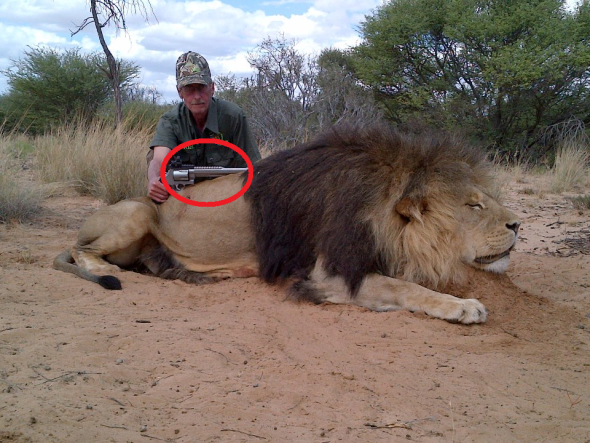
Trophy hunters takes pride killing a Lion in Africa with a hand type gun.
Trends
In addition to the trade of lion parts for Chinese medicine, as a substitute for tiger parts, research undertaken in Nigeria’s Yankari Game Reserve also suggested lions are being used in traditional African medicine - lion skins are used for back and joint pain, lion skin and lungs for the treatment of whooping cough, and lion veins for erectile dysfunction.
There is also the problem of quotas within CITES regulations. The agreement between participatory nations for legal trade in endangered species limits the transportation of such species to pre-set numbers. In 2011, for example, no more than 10 lions captured in the wild could be legally exported from Ethiopia.
On the face of it, this sounds a good solution to try and limit pressure on wild populations. However, the increase in quotas in recent years is a bad sign. According to information on the CITES Web site, in recent years only Ethiopia has allowed export. In 2012 however, Mozambique suddenly allowed the export of 50 lions captured in the wild per year.
And Roberts reveals an even more shocking new consumer fad - lion burgers. In an investigative study in 2010, Born Free revealed a “proliferation of lion meat advertised on menus in upscale restaurants and burger shops”.
Captive Breeding
Roberts also spoke against the possibility of captive breeding; the idea lions be bred like chickens or cattle, as they are in South Africa, for hunting and slaughter.
“The reason is two-fold. First, there is not an illegal trade in chicken meat or cow meat, the way there is in lion parts. And once you open legal trade in lion parts there is going to be illegal trade or laundering. This is not acceptable.
“Secondly, if you look at the history… where animals have been bred, presumably to reduce pressure on wild populations, it has failed miserably. Chinese tiger farms have not stopped the poaching in India. And the same goes for Asiatic black bears.
“The farming for bears started in Korea in the 1980s and spread to China, to provide Asian markets with bear gall bladders and bear bile. However, the wild population continues to be attacked, either to fill demand or re-stock farms.”
Lions and the Endgame
The lion, African or Asian, is an important part of mankind’s culture, whether or not we choose to believe that fact. The lion’s existence is interwoven into the very fabric of African folklore and daily life and the iconic images of a lion stalking the savannah, the rasping echo of its roar and the bloodcurdling chill of the animal in full flight are sights and sounds that are, in every sense of the word, irreplaceable.
A Jurassic Park-style reincarnation is not a solution. There can be no second chance. We cannot bring the lion back to life after having hunted and butchered every last animal. These are the days that will decide if the lion lives or dies.
Facts about Lions
- A century ago there were some 200,000 Lions roaming all over the African continent. Now there are no fewer than a mere 30,000 if that with the lowest estimated figure pointing to a possible 15,000.
- Over the last ten years a staggering two thirds of all Lions hunted for sport were imported from Africa into – United States of America. Americans are the largest hunting force within the world standing at a sky-rocketing 16.6 million over the age of 16 and growing yearly.
- African Lions have vanished from a whopping 80% of their range of which hunting, habitat fragmentation, human species conflict and unsustainable agriculture are primary causes for Lion depletion’s.
- Lions have become extinct in 26 countries. Only seven countries – Botswana, Ethiopia, Kenya, South Africa, Tanzania, Zambia and Zimbabwe – are believed to contain more than 1,000 lions each.
- Between 1999 and 2008, 64% of the 5,663 Lions that were killed in the African wild for sport ended up being shipped to America, it must also be noted numbers had risen sharply in those 10 years, with more than twice as many Lions taken as trophies by US hunters in 2008 than in 1999. In addition to personal trophies, Americans are also the world’s biggest buyers of Lion carcasses and body parts, including claws, skulls, bones and penises. In the same years, the US imported 63% of the 2,715 Lion specimens put up for sale.
- From 1996 – 2008 species populations of Panthera leo has not increased but decreased furthermore seeing few localised extinctions. The African Lion is still listed as vulnerable on the International Union for the Conservation of Nature’s Red List of Threatened Species yet the US Fish and Wildlife Service continue to allow importations of Lion trophies into America.
- The main threats to Lions are indiscriminate killing (primarily as a result of retaliatory or pre-emptive killing to protect life and livestock) and prey base depletion. Habitat loss and conversion has led to a number of populations becoming small and isolated.
- Demand from the Far East is also driving profits for Lions breeders. In 2001, two Lions were exported as “trophies” to China, Laos and Vietnam; in 2011, 70 Lion trophies were exported to those nations. While the trade in Tiger parts is now illegal, demand for Lion parts for traditional Asian medicine is soaring. In 2009, five Lion skeletons were exported from South Africa to Laos; in 2011, it was 496. The legal export of Lion bones and whole carcasses has also soared.
Thank you for reading - Please submit your proposal to ban the importation of Lion trophies and parts from Africa into Australia no later than the 22nd September 2014 17:00 AEST to the address below;
Please provide your written comments by AEST 5pm 22 September 2014 to:
The Director
Wildlife Trade Regulation
Department of the Environment
GPO Box 787
CANBERRA ACT 2601
wildlifetrade@environment.gov.au
Dr Josa C. Depre
Chief Environmental Officer.
International Animal Rescue Foundation Africa
Environmental and Botanical Conservationist
Honduran White and Northern White Bat.
Some have stated they resemble the appearance of Furbies while others sate they look like cute little Gremlins. Well actually they are indeed Honduran Ghost Bats, commonly named as the (Honduran White Bat) that we featured on our main International Animal Rescue Foundation Endangered Species Article few days ago that we release every Monday and Friday.
The Honduran White Bat just one of two unique species of white bat that inhabits planet Earth featured this week on our Endangered Species Post as they are currently listed as (near threatened). Scientifically named as Ectophylla alba populations of this very small (pygmy) style bat are on the decline. To what extent we are still unaware. Data on diet, population trend and behavior is limited.
White bats like all bats fall into the order of Chiroptera. Chiroptera is an ancient order of mammalia dating to the early Eocene, including the bats. They are nocturnal mouselike mammals having four toes of each of the anterior limbs elongated and connected by a web, so that they form membranous wings that can be used in flying. They also have anatomical adaptations, including large ears, for echolocation, by which they navigate and in some cases find insects. The order includes the suborders Megachiroptera (the fruit bats) and Microchiroptera (insectivorous bats). See Bat. Previously spelled cheiroptera.
Identified back in 1892 by Dr Joel Asaph Allen (July 19, 1838 – August 29, 1921) was an American zoologist and ornithologist. Dr Allen was one of worlds leading and most professionally sound experts in zoology and ornithology of which his work is still spoken about to this very day at many universities globally.
Allen was born in Springfield, Massachusetts. He studied at Harvard University under Louis Agassiz, and took part in Agassiz’s 1865 expedition to Brazil in search of evidence of an ice age there, which Agassiz later claimed to have found, and in others within the United States. Allen later crossed into Honduras and Panama in search of the elusive Honduras white bat.
Native to Costa Rica, Honduras, Nicaragua and Panama the Honduras White Bat has very few major threats. This doesn’t though for one minute mean its very few threats are indeed large to the species of Honduras White Bat. Populations are rapidly declining like many bat species internationally. The Honduras White Bat have habitat preference. In Costa Rica the population declined, food preference and habitat restriction is known.
Habitat fragmentation, forest clearance, poaching and trade are known “threats” to both species of white bat found exclusively within this area of the world. However little documentation has been compiled to indicate just how bigger threats these pose. International Animal Rescue Foundation World Action Brazil did back in 2012 monitored the Ectophylla alba of which noted land clearance and deforestation, timber trade posing as a significantly increased threat to “some fruit trees that the bat feeds from (again little data was compiled). The primary food source of the Honduran White Bat is fruit of which some food sources are being threatened with intense agriculture and land clearance to cope with human population inclines.
The Honduran White Bat is unique among most bats (but not many tropical bats) in that it will modify its immediate surroundings for its own benefit. Unlike the misconception that all bats live in caves, this bat will use the leave of the large Heliconia plant to form a tent.
It does so by cutting the side veins of the plant that extend out from the midrib; this causes the leaf to droop along the stem, making a tent. The little white bats then cling to the inner plant upside-down in small colonies of around six, although larger groupings have been reported. Unlike most bats that do make tents – the Honduran White Bat will not flee if disturbed lightly by looking under the leaf – they will only flee when the stem itself is disturbed causing a brief flurry of activity.
The advantage of having their white fur is postulated to be the reason – as when sunlight filters through the leaf they look green, and so by not moving they will go un-noticed by possible predators from below. We do not know of any other species of bat or bird that (mimics) its surroundings to protect itself from predation as the Honduran White Bat species does.
Within the last ten years there has been a decline of some thirty per cent of Honduran White Bat populations of which falls under the classification of (near threatened). Ectophylla alba is not known to be common.
Roosting in groups of 4 to 8 in tents and found mainly in (protected areas) the Honduran White Bats are also known to inhabit the Caribbean low lands too at a level of 700m.
Little did we know when publishing the article (Monday 1st September 2014) on the white bat did some 100,000 people and counting not even realize this bat existed, even among some high profile bat enthusiasts which is of some concern to us because the species is listed as near threatened. with a population decline still ongoing its articles such as these that need further exposure in the hope of encouraging others to document on the species and increase awareness in the hope that it will furthermore halt declines and preserve the Honduran White Bat for many hundreds of years to come.
Honduran White Bats are uncommon but local of which threats to the species are listed only in brief. Both males and females construct the tent by biting the leaf veins and pulling the leaf into shape. At the end it always looks like an upside-down boat. They only use seven types of plants for their shelters, and most tents are built in two different kinds of Heliconia species. A good tent- leaf has to be less than 2 m (6 feet) high. Probably to avoid high temperatures in the roost during the day, tents are built where the canopy is nice and thick, although the plant species used for tent building grow under thick as well as under more open canopy. Another important characteristic of useful leaves is that there are only few plants underneath, which is the bats’ way to avoid having predators sneak up to their roost. Honduran white bats only use fresh, new leaves to build their tents, probably because they are undamaged and still softer and therefore easier to bite. After all, these bats are tiny; the body is barely bigger than a nice juicy cherry. Thus the leaves cannot be too tough for the bats to be able to modify them. (see picture below).
Because of these preferences for roosts, Honduran white bats live primarily in mature secondary forests. Very young forests are unsuitable for the bats because they have a very thick understory and an open canopy, whereas mature forests have very few suitable tent plants. But even though secondary forests are common where Honduran white bats occur, the bats are vulnerable to habitat loss because they have very specific needs with respect to roosts. Therefore, continued conversion of forests to agricultural areas will decrease the options for Honduran white bats. (see video below for further information)…
Major threats to our Honduran White Bat is known to be (habitat restriction) that can be anything from deforestation, habitat loss from unsustainable agricultural practices and legal timber trade. Slash and burn techniques although not documented would most likely be a factor that would/could see the species placed in danger furthermore too.
So what do we know about threats associated with the Honduran White Bat? Lets take a look.
Deforestation is a primary threat to many species of wildlife within Costa Rica, secondary threats to white bats could well be the decline of its own roosting plant the Heliconia from which the Honduran bat uses as a safe roost making a well woven tent to keep up to twenty bats a time safe from predators.
Deforestation;
Deforestation is a major threat to biodiversity and ecosystems in Costa Rica. The country has a rich biodiversity with some 12,000 species of plants, 1,239 species of butterflies, 838 species of birds, 440 species of reptiles and amphibians, and 232 species of mammals, which have been under threat from deforestation. Costa Rica is home to the majority of white bast species.
Deforestation in Costa Rica has a serious impact on the environment and therefore may directly or indirectly contribute to flooding, desertification, sedimentation in rivers, loss of wildlife diversity, and the obvious sheer loss of timber. Since the end of World War II, approximately 80% of the forests of Costa Rica have disappeared. Approximately 20,000 acres (8,100 ha) of land are deforested annually; in the 1990s the country had one of the worst deforestation rates in Central America.
As the population grew, the people of Costa Rica cut down the forests to provide for pastureland for cattle ranching to produce beef for the world market to raise revenue. Since the 1950s, approximately 60% of Costa Rica has been cleared to make room for cattle ranching. The problem was worsened because during the 1960s, the United States offered Costa Rican cattle ranchers millions of dollars in loans to produce beef. The deforestation of Costa Rica’s tropical rain forests as in other countries is a threat to life worldwide with a profound effect on the global climate. Soil erosion has increased with deforestation with the topsoil washed away from the hills into the streams and out into the oceans, year after year.
Over half of Costa Rica’s existing forest cover today is under the protection of national parks, biological reserves, or wildlife refuges. However, the major problem in regards to deforestation is the privately owned plots which occupy the other half. Lenient laws on land and amendments to forestry law makes it easy to obtain logging concessions as owners exploit the land to maximise income.
As logging companies enter these forests to exploit them, they require access roads to transport the timber. While cattle ranching is by far the primary cause of deforestation in Costa Rica, banana plantations have also significantly contributed to the problem. Lowland rainforest has been most affected where 130,000 acres (530 km2) of previously forested land (primarily in the Atlantic and Northern regions) have been removed.
Such industries have been synonymous with health risks, notably the high levels of toxic pesticides which affected thousands of plantation workers throughout Central America in the 1970s. Pesticides used to grow bananas and other fruits such as mangoes and citrus fruit may enter the hydrological systems and contaminate the water. The removal of the forest to make way for these fruit planatations may also disrupt the nutrient balance in the soil and through monoculture exhaust the soils and render them unsustainable.
Although most of the larger plantations in Costa Rica are owned by large companies, often multinationals, population pressure in Costa Rica has increased the demand for land among farmers who are forced to venture out onto new land to deforest and farm and compete over scraps of land. While certain conservation laws have been passed in Costa Rica, the government lacks the resources to enforce them.
Light Pollution;
Light pollution could affect the regeneration of tropical rainforests because it disrupts the behaviour of seed dispersing bats, a study suggests. Researchers found that a species of fruit-eating bats in Costa Rica avoided foraging in artificial light. The team warned the findings suggested light pollution could have a negative impacts on ecosystems, and called for light-free refuges to be established. The findings have been published in the Journal of Applied Ecology.
Each year, large swaths of rainforest are cleared and converted to agricultural land. The team says the land is often abandoned when the soil fertility falls, making it uneconomic to grow crops. The team observed: “Natural succession of abandoned land could counter the loss of biodiversity, but the rate of natural reforestation is slow.” They added that fruit-eating bats help rainforest plants re-colonize the land because the mammals seemed to “tolerate habitat disturbance when dispersing seeds”.
“Under naturally dark conditions, bats produce a copious seed rain - even in deforested habitats and connect distant forest fragments,” they wrote.
“Yet, artificial light at night may compromise bat-mediated seed dispersal if bats avoided lit areas.”
Light sensitive;
In order to test the idea, the researchers studied the feeding behaviour of Sowell’s short-tailed bats (Carollia sowelli) - which feed on the fruits of pepper plants. The impact of light pollution could be reduced by… setting up dark refuges connected by dark corridors for light-sensitive species” Initially, they carried out an experiment using captive bats to demonstrate that food was often left unexplored or consumed when a compartment was dimly lit in comparison with dark compartments.
They said this indicated that “artificial light altered the foraging behaviour of fruit-eating bats”. In order to see if this behaviour was replicated in the wild, the researchers observed wild bats’ response to light emitted from a street lamp.
“We found that [fruits] were less likely to be harvested when plants were illuminated by a street lamp than under natural darkness,” they said.
Although previous research has shown that insect-eating bats’ foraging behaviour was adversely affected by artificial light, this was the first study to indicate that fruit-eating bat species also avoided lit areas. The findings suggested that light pollution could have adverse consequences for forest regeneration in the tropics, explained co-author Daniel Lewanzik from the Leibniz Institute for Zoo and Wildlife Research, Berlin. “In tropical habitats, bat-mediated seed dispersal is necessary for the rapid succession of deforested land because few other animals than bats disperse seeds into open habitats,” he said. In their paper, the team warned: “Policymakers of tropical countries should become aware of the potential detrimental effects of artificial lighting on wildlife and ecosystem functioning.” Mr Lewanzik added: “The impact of light pollution could be reduced by changes in lighting design and by setting up dark refuges connected by dark corridors for light-sensitive species like bats.”
Food Declines and Climatic Change;
Bats seem to have evolved as moderately long-lived (e.g., 5-30 years), intelligent creatures that are acutely in synchrony with global climates. Worldwide, bats are known to depend on a variety of natural resources. Many tropical species are dependent on nectar, pollen, and flowers and fruits of plants and are known to “track” the development of the plant resources upon which they depend. Not surprisingly, bats are frequent and important pollinators of plants, especially in tropical areas and on island ecosystems in the Pacific. Additionally, many bats rely on plants (especially trees) as roosting sites for varying periods of time. Disturbances to climate that interrupt or alter the phenology of plants, or greatly alter plant species occurrence or distribution, can be expected to affect bats. For example, a mean global warming of 3 C will change climates sufficiently so that 7-11% of vascular plants in North America will no longer occur within the appropriate climate “envelope.” This will require that such plants will have to adapt to the change, move to stay within the appropriate climate, or become extirpated. Such disruptions will likely affect bats.
Other species of bats, especially in temperate zones, are insectivorous and collectively consume large quantities of insects. Just as pollinating activities of bats are important to plant ecology, the insectivorous food habits of bats play an important role in maintaining a balance among insect populations. Although studies of bats have demonstrated some flexibility in food habits over time, most species appear to be specialized to pursue and capture selected kinds or categories of insects. Furthermore, bats are dependent upon a reliable and consistent “supply” of prey, even though specific insect populations grow and disappear over the course of a summer season. Changes in worldwide insect population occurrence or distribution can be expected to affect numbers and species diversity of bats.
In temperate latitudes, both northern and southern, bats avoid seasonal food shortages by either hibernating, often in caves or mines, or by migrating to regions where food is still available. We suspect that nearly all attributes of hibernation or migration are mediated by combinations of changes in ambient light regimes, temperature, and food resources. The dependence of temperate-zone bats on the interplay of these factors ultimately revolves around the bats’ ability to acquire sufficient energy (in the form of food) to either last them through a hibernation sequence or through the rigors of (sometimes) long-distance migration. Temperature changes that would affect the supply of food to bats or otherwise upset an energy balance that has evolved over millenia should have significant consequences for bats. Also, climate changes that would lead to changes in the internal temperatures of roosts that have been used by bats for decades will force bats to locate and use new or different roosts.
While the Honduran White Bat may seem cute and adorable it must be stated that removal of the bat from its natural habitat to domestic it for pet purposes is something we frown down upon. These bats like any other species must not be removed nor feed into the pet trade industry. When releasing our article on Monday this week we were a little concerned at the amount of comments from the public that quoted they “wanted one” “where can I purchase a white bat from” down to one comment “Going to take a few for my collection of bats”. Honduran White Bat is listed as (near threaded) so by reducing the species within the wild for domesticated purposes one is only adding to the further decline of the species.
While we documented on the Honduran White Bat we did state that a further write up on the second only known white bat would come later on during the week. The Northern “Ghost” bat commonly known as the (Northern White Bat) is related to the Honduran White Bat. Whilst listed as (least concern) and at lower risk, the Northern Ghost Bat is said to be the worlds rarest bat on planet Earth. Please view the picture below of the Northern Ghost Bat scientifically identified as Diclidurus albus.
This species occurs from Nayarit (Mexico) to eastern Brazil and Trinidad.
Native to;
Belize, Bolivia, Plurinational States of Brazil, Colombia, Costa Rica, Ecuador, El Salvador, French Guiana, Guatemala, Guyana, Honduras, Mexico, Nicaragua, Panama, Paraguay, Peru, Suriname, Trinidad and Tobago and Venezuela.
D. albus prefer humid habitats like riparian and tropical rainforests but have been found in human-disturbed areas like plantations, clearings, and over villages. They are solitary, and like all members of the family are insectivorous.
Like the Honduran White Bat they too roost in plantations. Roosts can be found in caves, deep rock crevices, and old mines. Although ghost bats prefer to roost in colonies, they currently only roost in small groups at best due to a lack of roosting sites that support larger colonies. It is unusual for there to be a colony of more than 100 bats in one location. It often roosts singly under palm leaves. Whereas the later species will only roost under Heliconia plantation leaves.
Please do not confuse these two species of “white bats” “ghost bats” with the very rare Australian Ghost bat that is much larger in size and believed to be only endemic to Australia.
Conclusion;
Since Honduran white bats live mainly under heliconia leaves, rainforest destruction is a serious threat. For this species to survive, rainforests in the Central American lowlands that have heliconia must remain standing. Natural predators may include opossums, snakes and other carnivorous animals. During the day, Honduran white bats roost under their tents. At night, they emerge to search for food. However, these creatures are not looking to suck your blood — they only eat fruit or vegetation.
Josa C Depre
Environmental and Botanical Director
International Animal Rescue Foundation

